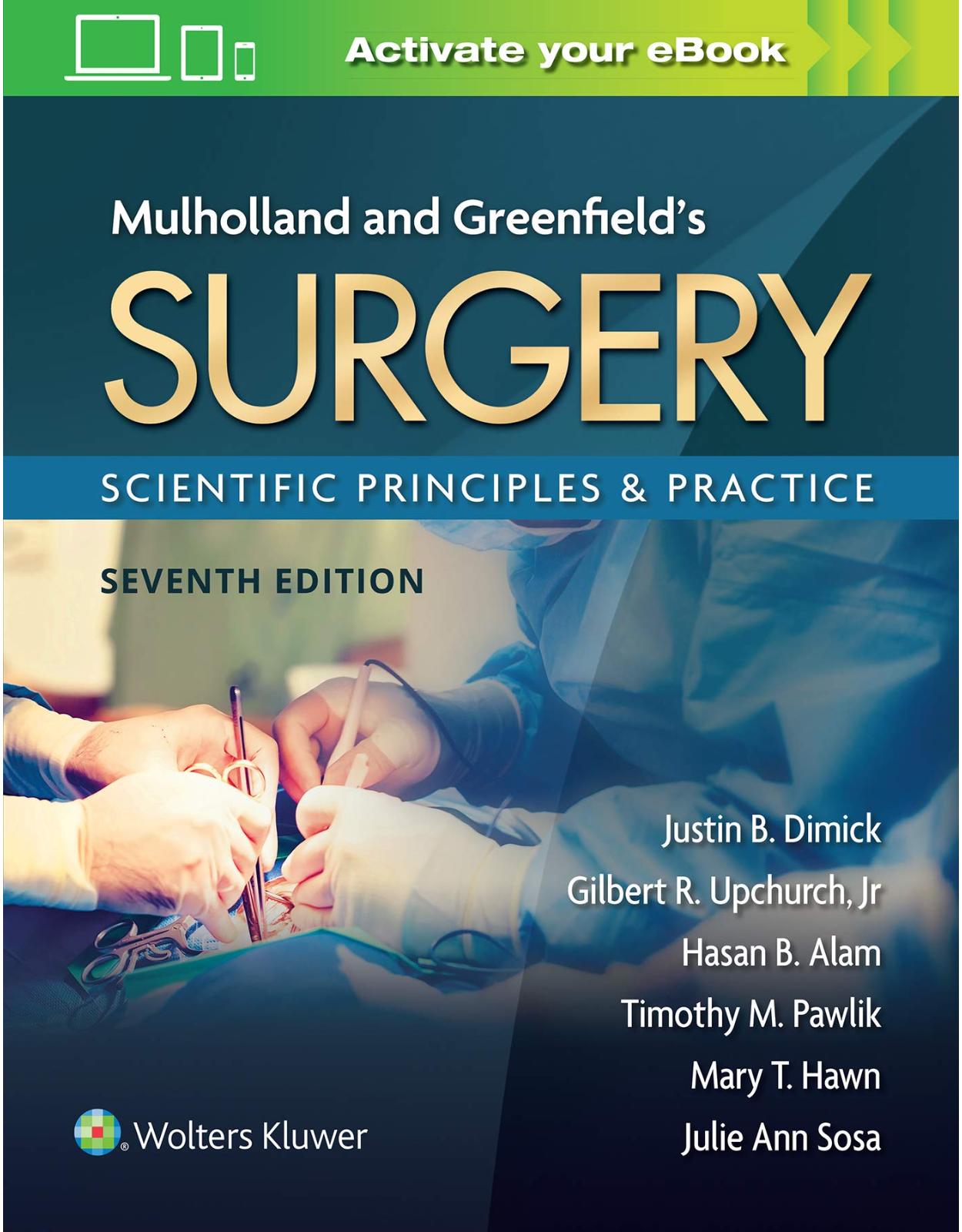
Mulholland & Greenfield’s Surgery: Scientific Principles and Practice
Livrare gratis la comenzi peste 500 RON. Pentru celelalte comenzi livrarea este 20 RON.
Disponibilitate: La comanda in aproximativ 4 saptamani
Autor: Justin B. Dimick MD
Editura: LWW
Limba: Engleza
Nr. pagini: 1984
Coperta: Hardcover
Dimensiuni: 213 x 276 x 70 mm
An aparitie: 01/07/2021
Description:
Newly streamlined and focused on quick-access, easy-to-digest content, Mulholland and Greenfield’s Surgery: Scientific Principles & Practice, 7th Edition, remains an invaluable resource for today’s residents and practicing surgeons. This gold standard text balances scientific advances with clinical practice, reflecting rapid changes, new technologies, and innovative techniques in today’s surgical care. New lead editor Dr. Justin Dimick and a team of expert editors and contributing authors bring a fresh perspective and vision to this classic reference.
Table of Contents:
1 Lifelong Learning
The Importance of Lifelong Learning
WHAT IS SELF-REGULATED LEARNING?
Fostering Self-Regulated Learning: Assessment Tools
FOSTERING SELF-REGULATED LEARNING: COACHING
FOSTERING SELF-REGULATED LEARNING: SELF-REGULATED READING
THE CHALLENGE OF SELF-REGULATED LEARNING DURING SURGICAL TRAINING
2 Substrate Metabolism in Surgery
CARBOHYDRATE METABOLISM
Glycogenesis and Glycogenolysis
Glycolysis
The Cori Cycle
Gluconeogenesis
Pentose Phosphate Pathway
LIPID METABOLISM
Lipolysis
Ketogenesis and Ketone Oxidation
Lipogenesis
Cholesterol Metabolism
Phospholipids
PROTEIN METABOLISM
THE UREA CYCLE
CELLULAR ENERGY GENERATION
Overview
Stage II: The Krebs Cycle—Integration of Metabolic Pathways and Oxidation of Acetyl CoA
Stages III and IV: Oxidative Phosphorylation
BIOTRANSFORMATION
Cytochromes P-450
Uridine Diphosphate-Glucuronyl Transferases
Glutathione S-transferases
Sulfotransferases
3 Surgical Nutrition and Metabolism
INTRODUCTION
BASIC METABOLIC PRINCIPLES
Body Composition
ENERGY AND SUBSTRATE METABOLISM
Measuring Energy Expenditure
NUTRITIONAL ASSESSMENT
OVERFEEDING AND MALNUTRITION
Overfeeding
Malnutrition
Substrate Metabolism Changes during Stress
Stressor-Dependent Adjustments to the Metabolic Response
NUTRITIONAL SUPPORT
Nutritional Support in Elective Surgery
Nutritional Support in Critical Care
Parenteral Nutrition Considerations
Enteral Nutrition Considerations
Macro- and Micronutrient Selection
Nutritional Access
NUTRITIONAL CONSIDERATIONS IN SPECIAL POPULATIONS
Sepsis and Septic Shock
Acute Respiratory Failure
Acute Renal Failure
Acute Liver Failure
Complications of Gastrointestinal Surgery
Burns
Acute Pancreatitis
Trauma
Solid Organ Transplant
Bariatric Surgery
Geriatrics
Obesity
4 The Pathogenesis of Obesity and Metabolic Disease
GENETICS OF OBESITY
Metabolic Thrift, Genetics, and Epigenetics
Human Metabolic Diversity and Environment
Physiology of Obesity
The Adipostat
Satiety and Hunger
Metabolic Rate
Adipocyte Physiology
The Microbiome
Bariatric Surgery and Weight Physiology
Summary
PATHOPHYSIOLOGY OF METABOLIC DISEASE
Obesity and Metabolic Disease
Nutrient Excess
Cellular Responses to Nutrient Excess
Adipose Tissue Failure
Adipose Tissue Overflow
SYSTEMIC METABOLIC DISEASE
Mediators of Metabolic Disease
Portal Overflow and Liver Disease
Diabetes
Cancer
CONCLUSION
5 Wound Healing
PHASES OF WOUND HEALING
Hemostasis
Inflammatory Phase
Proliferation Phase
Remodeling Phase
CLINICAL CONSIDERATIONS
Chronic versus Acute Wounds
MEDICATIONS AND DIETARY SUPPLEMENTS
Glucocorticoid Steroids
Radiation
6 Hemostasis
BASIC CONSIDERATIONS
NATURAL ANTICOAGULANT MECHANISMS
FIBRINOLYSIS
ENDOTHELIUM AND HEMOSTASIS
THROMBOSIS, INFLAMMATION, AND RESOLUTION
Cell Adhesion Molecules
Leukocytes and Thrombosis
ARTERIAL VERSUS VENOUS THROMBOSIS
PROCOAGULANT STATES
Acquired Procoagulant States
Inherited Procoagulant States
BLEEDING DISORDERS
Coagulation Factor Deficiency
Rare Factor Deficiencies
Platelet Disorders
Abnormalities in Fibrinolysis
7 Inflammation
INNATE VERSUS ADAPTIVE IMMUNITY
CELLULAR COMPONENTS
Neutrophils
Mononuclear Phagocytes
Lymphocytes
Eosinophils
Basophils and Mast Cells
Platelets
Myeloid-Derived Suppressor Cells
NONCELLULAR COMPONENTS
Cytokines
Early Cytokines/Innate Immunity
Late Cytokines/Adaptive Immunity
Cytokines that Stimulate Hematopoiesis
The Complement System
Lipid Mediators
Kinins
Neuropeptides
Nitric Oxide (NO)
Heme Oxygenase (HO)
Hydrogen Sulfide
RECOGNITION AND ACTIVATION PROCESSES
Exogenous and Endogenous Danger Recognition
Damage-Associated Molecular Patterns (DAMPs)
Receptors for Danger Recognition
CD14
AUTOPHAGY
THE STRESS RESPONSE
The Acute-Phase Response
Reperfusion Injury
Systemic Inflammatory Response Syndrome
Chronic Inflammation
8 Surgical Infections
INTRODUCTION
Early Use of Appropriate Broad-Spectrum Antimicrobial Therapy
Source Control
Pathogen Identification
INTRA-ABDOMINAL INFECTIONS
Classification
Diagnosis
Treatment
SPECIFIC INTRA-ABDOMINAL INFECTIONS
Appendicitis
Biliary Infections
Diverticulitis
Clostridium Difficile Colitis
Pancreatitis
SKIN AND SOFT TISSUE INFECTIONS
Classification of Skin and Soft Tissue Infections
Early Diagnosis and Differentiation of Necrotizing versus Nonnecrotizing SSTI
Early Initiation of Appropriate Empiric Broad-Spectrum Antimicrobial Therapy with Anti-MRSA Coverage and Consideration of Risk Factors for Specific Pathogens
Necrotizing Soft Tissue Infections
Pyomyositis
SURGICAL SITE INFECTIONS
Epidemiology
Definitions
Risk Factors for Surgical Site Infection
Surgical Site Infection Prevention
Additional Strategies for Surgical Site Infection Prevention
Surgical Site Infection and Colorectal Surgery
Treatment of Surgical Site Infection
Current Challenges in Surgical Site Infection
9 Shock
INTRODUCTION
EVALUATION OF SHOCK
TYPES OF SHOCK
Hypovolemic Shock
Cardiogenic Shock
Extracardiac Obstructive Shock
Distributive Shock
Septic Shock
Traumatic Shock
Neurogenic Shock
Physiologic Response to Hypovolemia
Acute Response
Sustained Response
ORGAN-SPECIFIC COMPENSATORY RESPONSES TO SHOCK
Cardiac and Microvascular Response
Neuroendocrine Response
Immunoinflammatory Response
Pulmonary Response
Renal Response
Hepatic Response
Genetic Regulation of the Response to Shock
LOSS OF COMPENSATORY RESPONSES TO SHOCK
COMPLICATIONS OF SHOCK
Ischemia–Reperfusion Injury
Multiple Organ Dysfunction Syndrome and CCI
Abdominal Compartment Syndrome
Hypothermia
Coagulopathy
TREATMENT
Fluid Therapy
Permissive Hypotension
Transfusion
Endpoints of Resuscitation
MONITORS
Central Venous Pressure
Pulmonary Artery Catheter
Minimally Invasive CO Monitors
Arterial Wave Contour Analysis
Bedside Ultrasound and Echocardiography
PHARMACEUTICAL SUPPORT
Inotropes and Vasopressors
Vasodilators
Miscellaneous Therapeutics
Future Therapies
10 Critical Care
INTRODUCTION
HEMODYNAMIC MONITORING
Oxygen Transport
Volume Assessment
Fluid Responsiveness
Cardiac Function
CARDIAC ARREST AND DYSRHYTHMIAS
PULMONARY GAS EXCHANGE
Oxygenation
Ventilation
VENTILATOR MODES
Pulmonary Mechanics
ACUTE RESPIRATORY FAILURE
Diagnosis
Ventilator Management
Ventilator-Associated Events
Liberation from Ventilation
VENOUS THROMBOEMBOLISM PROPHYLAXIS
Incidence
Risk Factor Scoring
Approaches to Prevention of VTE
TRANSFUSION
METABOLISM AND NUTRITION
Metabolic Requirements and Assessment
Nutritional Support
Routes of Nutritional Support
Timing of Nutritional Support
Organ Specific Nutritional Support
Immunonutrition
Stress-Related Mucosal Disease
ACUTE KIDNEY INJURY
Etiology
Severity
Treatment of Acute Kidney Injury
LIVER DYSFUNCTION
Variceal Bleeding
Hepatic Encephalopathy
Ascites and Spontaneous Bacterial Peritonitis
Hepatorenal Syndrome
Liver Failure
ENDOCRINE ISSUES
Glucose Control
Adrenal Insufficiency
Thyroid Abnormalities
INFECTIOUS DISEASE ISSUES
Sepsis Guidelines
Hospital Acquired Infections
NEUROLOGIC ISSUES
Analgesia and Sedation
Delirium
ORGANIZATIONAL STRUCTURE OF CRITICAL CARE
Evidence-Based Care
Severity of Illness
11 Fluids, Electrolytes, and Acid–Base Balance
INTRODUCTION
BODY FLUIDS
Total Body Water and Body Fluid Compartments
Composition of Body Fluids
Osmotic Activity of Body Fluids
Colloid Oncotic Pressure (Colloid Osmotic Pressure)
Osmoregulation
Tonicity of Body Fluids
FLUID BALANCE
Sodium Concentration and Water Balance
Volume Control
Normal Water and Electrolyte Exchange
NORMAL WATER EXCHANGE
FLUID AND ELECTROLYTE THERAPY
Parenteral Solutions
GOALS OF FLUID AND ELECTROLYTE THERAPY
Maintenance Fluid Therapy
Maintenance Electrolyte Therapy
Additional Electrolyte Therapy
CORRECTION OF VOLUME ABNORMALITIES
Volume Deficits
Volume Excess
REPLACEMENT OF ONGOING FLUID LOSSES
Intraoperative Fluid Therapy
Postoperative Fluid Therapy and Monitoring
ELECTROLYTES
Where Sodium Goes, Water Follows
Potassium
Calcium
Magnesium
ACID–BASE
Buffer Systems
Acid–Base Disturbances
Metabolic Acidosis
Metabolic Alkalosis
Respiratory Alkalosis
Respiratory Acidosis
Mixed Acid–Base Disorders
12 Burns: Medical, Surgical, Critical Care and Reconstruction of the Burn Patient
INTRODUCTION
EPIDEMIOLOGY
Children
Adults
Older Adults
Race and Ethnicity
Socioeconomic Status
ETIOLOGY
Flame Burns
Contact Injuries
Electrical Burns
Chemical Burns
Frostbite
PHYSIOLOGY OF BURNS
Burn Shock
Metabolic Response to Burn Injury
Immunologic Response to Burn Injury
EMERGENCY CARE
Airway Assessment
Fluid Resuscitation
Difficult to Resuscitate Patients
Burn Severity
CRITICAL CARE OF THE BURN PATIENT
Hemodynamic Monitoring
Ventilator Strategies
Electrolyte Abnormalities and Acute Renal Failure
Metabolic Response and Nutrition
WOUND MANAGEMENT
OPERATIVE INTERVENTIONS
Excision and Grafting
Order of Coverage
Extremity Treatment
Skin Alternatives
PAIN CONTROL
Acute Pain
Chronic Pain and Substance Abuse
INFECTIONS
Wound Infections
Vascular Catheter–Related Infections
Pneumonia
BURN RECONSTRUCTION
Optimizing Acute Treatment to Minimize the Need for Reconstruction
Hypertrophic Scarring
Tissue Expansion
Specific Anatomic Concerns
ASSOCIATED COMPLICATIONS OF BURN INJURIES
Muscle Catabolism and Wasting
Heterotopic Ossification
Majorlin Ulcer
CLINICAL RESEARCH
BASIC SCIENCE AND TRANSLATIONAL SCIENCE RESEARCH
CONCLUSION
13 Anesthesiology and Pain Management
INTRODUCTION
ANESTHETIC AGENTS AND THEIR PHYSIOLOGIC EFFECTS
Inhalation Agents
Intravenous Sedatives/Hypnotics
Muscle Relaxants
Opioids (Narcotics) and Other Intravenous Analgesics
Propofol
Ketamine
Amnesics and Anxiolytics
Local Anesthetics
NEURAXIAL BLOCKADE
PERIPHERAL NERVE BLOCKADE
SEDATION ANALGESIA FOR MINOR SURGICAL PROCEDURES
AIRWAY EVALUATION FOR THE NONANESTHESIOLOGIST
RISKS ASSOCIATED WITH ANESTHESIA
Cardiovascular Diseases
Pulmonary Disease
Obesity
Diabetes Mellitus
Renal Insufficiency and Failure
Obstructive Sleep Apnea
Risks Associated with Regional Techniques in Patients Being Treated with Anticoagulants
PREOPERATIVE EVALUATION
MONITORING THE SURGICAL PATIENT
Monitors of Oxygenation
Ventilation Monitors
Circulation Monitors
“Awareness” and Level of Consciousness Monitors
COMMON PROBLEMS IN THE POSTOPERATIVE PERIOD
ENHANCED RECOVERY PROTOCOLS
POSTOPERATIVE ACUTE PAIN MANAGEMENT
ACKNOWLEDGMENTS
14 Preoperative Risk Assessment
INTRODUCTION
SURGICAL MORTALITY, COMPLICATIONS, AND PATIENT-CENTERED OUTCOMES
RISK STRATIFICATION
Risk Calculators
GENERAL CONCEPTS OF PREOPERATIVE EVALUATION
Anesthesia
Surgical Procedure
Disparities
Age
Medical Comorbidity
Direction of Care
MEDICATION MANAGEMENT
SPECIFIC ORGAN SYSTEM GUIDELINES
Cardiovascular
Pulmonary
Hepatic
Renal
ADDITIONAL CONSIDERATIONS, FUTURE DIRECTIONS
15 Measuring the Quality of Surgical Care: Surgeons, Hospitals and Systems
INTRODUCTION
OVERVIEW OF CURRENT MEASURES
TRADITIONAL QUALITY MEASURES
Structure
Process of Care
Outcomes
CHOOSING THE RIGHT MEASURE
IMPROVING OUR ABILITY TO MEASURE
EMERGING NEED TO MEASURE AND IMPROVE SURGICAL CARE ACROSS HEALTHCARE SYSTEMS
16 Improving Surgical Quality
INTRODUCTION
QUALITY METRICS
QUALITY IMPROVEMENT PROCESSES
Outcome Based
Culture and Quality
QUALITY IMPROVEMENT POLICY AND REGULATION—THE MOVE TOWARD VALUE
17 Global Surgery
GLOBAL SURGERY DEFINED
HISTORY
CHALLENGES OF PROVIDING SURGICAL CARE
EPIDEMIOLOGY
COST-EFFECTIVENESS
SCALING UP SURGICAL CAPACITY
Workforce Shortages
Training and Education Models
LOGISTICS AND SPECIAL CONSIDERATIONS
Research
Humanitarian Surgery Considerations
GETTING INVOLVED
CONCLUSION
18 Patient Safety
INTRODUCTION TO PATIENT SAFETY
ADVERSE EVENTS AND ERRORS
MEASUREMENT CHALLENGES
SYSTEMS THINKING
DISTINCTION BETWEEN QUALITY AND SAFETY
CREATING A CULTURE OF SAFETY
MEASURING SAFETY CULTURE
Teamwork and Communication
MEASURING TEAMWORK
TOOLS FOR IMPROVING SAFETY CULTURE, TEAMWORK, AND COMMUNICATION
INVESTIGATING A SAFETY EVENT: ROOT CAUSE ANALYSIS
ESTABLISHING A COMPREHENSIVE SAFETY PROGRAM
CONCLUSIONS
Part Two Surgical Practice
SECTION A: TRAUMA
19 Trauma and Trauma Care: General Considerations
BURDEN OF DISEASE
EVOLVING MECHANISMS OF INJURIES WITH CHANGING POPULATION DEMOGRAPHICS
BIOMECHANICS OF INJURY
IMMEDIATE, EARLY, AND LATE DEATHS AFTER INJURY
FIELD TRIAGE DECISIONS AND EARLY PRIORITIES
EARLY HOSPITAL CARE AND PRIORITIES
LESSONS LEARNED FROM THE BATTLEFIELD
FUTURE DIRECTIONS
20 Prehospital and New Advances in Resuscitation
INTRODUCTION
PREHOSPITAL CARE
Personnel
Triage
Scoop and Run versus Stay and Play
SCENE ASSESSMENT AND MANAGEMENT
Airway
Breathing
Circulation
Resuscitation
CONTROVERSIES
Resuscitative Endovascular Balloon Occlusion of Aorta
LTOWB Rh-Positive Transfusion in Children and Women of Childbearing Potential
Rapid Sequence Intubation versus Non-RSI
CONCLUSION
21 Head Injuries
INTRODUCTION
EPIDEMIOLOGY
CLASSIFICATION
Clinical Scoring System
Neuroimaging Scales
PATHOPHYSIOLOGY OF TBI
Primary Brain Injury
Secondary Brain Injury
Molecular and Cellular Mechanisms in TBI
CLINICAL ASSESSMENT
RADIOLOGIC ASSESSMENT
MANAGEMENT OF BRAIN INJURIES
Broad Goals of Management
Initial Resuscitation
Neuromonitoring
Medical Management of ICP Elevation
Sedation and Analgesia
Therapeutic Intensity Level and Management Parameters to Control ICP
Management of Impending Cerebral Herniation
SURGICAL APPROACH
Skull Fracture
Epidural Hematoma
Subdural Hematoma
Parenchymal Contusions
Penetrating Injuries to the Brain
Role of Decompressive Craniectomy
PROGNOSIS
22 Injury and Violence Prevention: A Public Health Approach
HISTORY OF INJURY PREVENTION
EPIDEMIOLOGY OF INJURY: DEFINING THE PROBLEM
Unintentional Injury
Suicide and Self-Harm
Homicide and Assault
Mass Shootings
Legal Intervention
Intimate Partner Violence
Child Abuse
Firearm Injury
LANDMARK INJURY PREVENTION INITIATIVES
Violence as Public Health Problem
THE SOCIAL ECOLOGIC MODEL
THE SURGEON’S ROLE IN FIREARM-RELATED INJURY AND VIOLENCE PREVENTION
Primary Prevention
Secondary and Tertiary Prevention
23 Neck Injuries
INTRODUCTION
FUNCTIONAL ANATOMY
INITIAL MANAGEMENT
SELECTIVE VERSUS MANDATORY EXPLORATION
Overall Approach
Current Imaging Technology
Penetrating Neck Trauma
Blunt Neck Trauma
MANAGEMENT OF SPECIFIC INJURIES
Blunt Cerebrovascular Injury (BCVI)
OPERATIVE EXPLORATION
Penetrating Vascular Injury
Trachea and Larynx
Esophagus
COMPLICATIONS
24 Thoracic Trauma
INTRODUCTION
INITIAL IMAGING
COMMON INJURIES
Rib Fractures
Pneumothorax
Pulmonary Contusion
Hemothorax
Retained Hemothorax
Aortic Injury
Diaphragmatic Injuries
Cardiac
Blunt Cardiac Injury
Tracheobronchial Injury
Thoracic Esophageal Injury
RESUSCITATIVE THORACOTOMY
CONCLUSION
25 Abdominal Trauma
INTRODUCTION
BLUNT INITIAL EVALUATION AND DIAGNOSTICS
Resuscitation
Diagnostics
PENETRATING INJURY—INITIAL EVALUATION AND DIAGNOSTICS
General Approach to Penetrating Abdominal Injury
Indications and Contraindications to Selective Nonoperative Management
Diagnostics
THE TRAUMA LAPAROTOMY
DAMAGE CONTROL LAPAROTOMY
DIAPHRAGM
Anatomy
Epidemiology
Diagnostics
Treatment
LIVER AND BILIARY TRACT
Anatomy
Epidemiology
Diagnostics
Treatment
Extrahepatic Biliary Tract Injury
SPLEEN
Anatomy
Epidemiology
Diagnostics
Treatment
PANCREAS
Anatomy
Epidemiology
Diagnostics
Treatment
STOMACH
Anatomy
Diagnostics
Treatment
DUODENUM
Anatomy
Epidemiology
Treatment
COLON
Epidemiology
Diagnostics
Treatment
RECTUM
Anatomy
Epidemiology
Diagnostics
26 Genitourinary Trauma
KIDNEY
Evaluation
Treatment
Complications
URETER
Evaluation
Treatment
BLADDER
Evaluation
Treatment
URETHRA
Evaluation
Treatment
27 Vascular Trauma
BACKGROUND
EPIDEMIOLOGY AND MECHANISMS OF VASCULAR TRAUMA
Wartime Vascular Injury
Civilian Population Vascular Trauma
Mechanism of Vascular Trauma
DIAGNOSIS OF VASCULAR INJURY
Physical Examination
Adjuncts to the Physical Examination
Computed Tomography and Magnetic Resonance Imaging for Vascular Trauma
Contrast Angiography
MANAGEMENT OF THE PATIENT WITH VASCULAR TRAUMA
Trauma Patient Pathophysiology
Resuscitation of the Trauma Patient
General Intraoperative Considerations and Pearls
MANAGEMENT OF SPECIFIC INJURY PATTERNS—EXTREMITY
Upper Extremity
Lower Extremity
MANAGEMENT OF SPECIFIC INJURY PATTERNS—CERVICAL
MANAGEMENT OF SPECIFIC INJURY PATTERNS—TORSO
Thoracic Cavity
Abdomen and Retroperitoneum
ENDOVASCULAR MANAGEMENT OF TRAUMATIC VASCULAR INJURIES
CONCLUSION
28 The Principles of Orthopedic Surgery for Trauma
INTRODUCTION—AIMS AND PRIORITIES IN ORTHOPEDIC TRAUMA CARE
ORTHOPEDIC TRAUMA SURGERY TO SAVE LIFE
Hemorrhage
The Bleeding Pelvis
Pelvic Packing
COMPLICATED PELVIC INJURIES— OPEN FRACTURES OR ASSOCIATED VISCERAL INJURY
THE ORTHOPEDIC MANAGEMENT OF MAJOR POLYTRAUMA
Damage Control Surgery in Orthopedics
Special Polytrauma Situations—Head Injury
Special Polytrauma Situations—Chest Injury and Femur Fractures
SPECIFIC ORTHOPEDIC SCENARIOS
Major Wounds
ORTHOPEDIC TRAUMA SURGERY TO SAVE LIMBS
Open Fracture Principles
VASCULAR INJURIES
COMPARTMENT SYNDROME
INDICATIONS FOR AMPUTATION/FAILURE OF RECONSTRUCTION
ORTHOPEDIC TRAUMA SURGERY TO LIMIT DISABILITY—MANAGEMENT OF FRACTURES
Complex Articular Fractures
SPECIAL FRACTURE GROUPS—PROXIMAL FEMUR
COMPLICATIONS
Infection Nonunion and Malunion
Orthopedic Injury/Disaster Triage
29 Pediatric Trauma
INTRODUCTION AND EPIDEMIOLOGY
TRAUMA SYSTEMS
INITIAL ASSESSMENT, RESUSCITATION, AND STABILIZATION
Vital Signs
Fluid Resuscitation
SECONDARY SURVEY AND ADJUNCT DIAGNOSTIC MODALITIES
MANAGEMENT OF SPECIFIC INJURIES
Traumatic Brain Injury
Mild Traumatic Brain Injury
Spine Trauma
Thoracic Trauma
Abdominal Trauma
Pelvic Fracture and Extremity Trauma
Nonaccidental Trauma (Child Abuse)
Injury Prevention
Smoke Detectors and Carbon Monoxide Detectors
Drunken Driving Laws
Junior Driver Laws/Safe Driving Laws
Child Passenger Restraints
All-Terrain Vehicle Laws
GUN VIOLENCE PREVENTION
30 Geriatric Trauma
INTRODUCTION
PHYSIOLOGY, COMORBIDITY, AND PREINJURY MEDICATIONS
Cardiovascular
Pulmonary
Renal and Gastrointestinal
Medications
MECHANISM AND INJURIES
Elderly Abuse
Traumatic Brain Injury
Fractures
TRIAGE CRITERIA FOR OLDER PATIENTS
EVALUATION AND MANAGEMENT
Trauma Evaluation
Comprehensive Geriatric Assessment
Assessing Frailty
Patient Management
OUTCOMES
Mortality Outcomes
Functional Outcomes
PALLIATIVE AND END-OF-LIFE CARE IN THE GERIATRIC TRAUMA PATIENT
End-of-Life Care
Hospice
31 Trauma in Pregnancy
INTRODUCTION
EPIDEMIOLOGY
MECHANISMS OF INJURY
EVALUATION OF THE PREGNANT TRAUMA PATIENT
Airway
Pulmonary System
Cardiovascular System
Hematologic System
FETAL EVALUATION AND MONITORING
DIAGNOSTIC IMAGING
Pelvic Fractures
Abruptio Placentae
Uterine Rupture
Amniotic Fluid Embolism
Eclampsia
Disseminated Intravascular Coagulation
EMERGENCY CAESARIAN SECTION
SOCIAL CONSIDERATIONS
TEAM APPROACH TO TRAUMA IN THE PREGNANT PATIENT
32 Postinjury Management
32 Postinjury Management
INTRODUCTION
ACUTE TRAUMATIC COAGULOPATHY
DETECTION OF TRAUMATIC COAGULOPATHY
DAMAGE CONTROL RESUSCITATION
ENDPOINTS OF RESUSCITATION
ABDOMINAL COMPARTMENT SYNDROME
TRAUMATIC BRAIN INJURY
Secondary Brain Injury
Imaging in TBI
Coagulopathy in TBI
Antiplatelet and Anticoagulation Therapy in TBI
Seizure Prophylaxis after TBI
Penetrating Brain Injury
NUTRITIONAL AND METABOLIC SUPPORT
ORGAN DONATION
Rib Fractures
Blunt Cardiac Injury
33 Environmental Injuries
INTRODUCTION
ENVENOMATION
Snakebite
Venomous Lizards
Insect Bites and Stings
Spiders
Brown Recluse
Black Widow Spiders
HYMENOPTERA
Killer Bees
Fire Ants
Scorpions
Centipedes and Millipedes
Asp Caterpillars
Hypothermia
Cold Injury and Frostbite
Treatment
SECTION B: TRANSPLANTATION
34 Clinical Transplant Immunology
INTRODUCTION
SCIENTIFIC BASIS FOR MODERN CLINICAL IMMUNOSUPPRESSION
The Immune Response to a Solid Organ Transplant
REJECTION IN SOLID ORGAN TRANSPLANTATION
Hyperacute Rejection
Acute Rejection
Chronic Rejection
Antibody-Mediated Rejection
IMMUNOLOGIC PHARMACOTHERAPY IN SOLID ORGAN TRANSPLANTATION
Induction
CELL SURFACE RECEPTOR BLOCKADE
B7/CD28 CTLA4 Blockade
IL-2 Receptor Blockade
LEUKOCYTE DEPLETION
MAINTENANCE IMMUNOSUPPRESSION
Calcineurin Inhibitors
Steroids
mTOR Inhibitors
Antimetabolite Drugs
Infections after Transplant
Cancer
35 Organ Retrieval and Preservation
ORGAN DONATION
Living Donation
Deceased Donation
ORGAN SELECTION
Donor History of Cancer
Donor History of Infectious Disease
Organ-Specific Issues
THE ORGAN RETRIEVAL OPERATION
Heart and Lung Retrieval
Liver Retrieval
Kidney Retrieval
Pancreas Retrieval
NEW METHODS IN ORGAN OPTIMIZATION AND PRESERVATION
36 Kidney Transplantation
INTRODUCTION
IMMUNOLOGY OF RENAL TRANSPLANTATION
THE DONOR POOL: LIVING DONORS, DECEASED DONORS, AND DONATION AFTER CARDIAC DEATH
Living Donors
Deceased Donors
Further Strategies for Increasing the Number of Donor Kidneys
THE TRANSPLANT PROCEDURE
Recipient Preoperative Assessment
Living-Donor Nephrectomy: Open and Laparoscopic
Recipient Operative Procedure
COMPLICATIONS
Early Graft Dysfunction
Technical Complications
IMMUNOSUPPRESSION, REJECTION, AND IMMUNOSUPPRESSIVE COMPLICATIONS
Immunosuppression
Rejection
Immunosuppressive Complications
CURRENT RESULTS AND FUTURE TRENDS
37 Hepatic Transplantation
INDICATIONS FOR LIVER TRANSPLANTATION
Nonalcoholic Fatty Liver Disease
Alcohol-Related Liver Disease
Transplant for Malignancy
END-STAGE LIVER DISEASE AND EVALUATION FOR LIVER TRANSPLANTATION
Acute Liver Injury and Fulminant Hepatic Failure
Medical and Surgical Evaluation for Liver Transplantation
Waitlist Management and Organ Allocation
SURGICAL PROCEDURE: LIVER TRANSPLANTATION
Anesthetic Management
Intraoperative Management of Coagulopathy
Surgical Technique
Recipient Hepatectomy
Anhepatic Phase and Implantation of the Donor Liver
Post-revascularization Phase
Technique for Partial Liver Transplantation
Living Donor Liver Transplantation
POSTTRANSPLANT CARE AND COMPLICATIONS
Recipient Factors
Donor Factors
Technical Factors
Vascular Complications
Biliary Complications
Immunologic Complications
Antibody-Mediated Rejection
Cellular Rejection
Chronic Rejection
Immunosuppression Induction and Maintenance
Treatment of Acute Rejection
38 Cardiac Transplantation
HISTORICAL PERSPECTIVE
INDICATIONS FOR TRANSPLANTATION
PRETRANSPLANT MANAGEMENT
PRETRANSPLANT ASSESSMENT
ORGAN AVAILABILITY AND ALLOCATION
IMMUNOSUPPRESSION
DONOR SELECTION AND MANAGEMENT
Donor Selection
Heart Procurement
Key Concept
RECIPIENT MANAGEMENT AND PROCEDURE
CURRENT OUTCOMES
Survival
Complications
FUTURE DIRECTIONS
CONCLUSION
39 Lung Transplantation
INTRODUCTION
Early Years of Lung Transplantation
Current Status of Lung Transplants in the United States
THE FINAL RULE
Lung Allocation
INDICATIONS
Idiopathic Pulmonary Fibrosis
Chronic Obstructive Pulmonary Disease
Cystic Fibrosis
Pulmonary Hypertension
Contraindications to Lung Transplantation
OPERATIVE PROCEDURES
Donor Recovery Operation
Recipient Preparation
Single Lung Transplantation
Bilateral Lung Transplantation
OPERATIVE CONSIDERATIONS
Allograft Ischemic Time
Unilateral versus Bilateral Lung Transplant
Intraoperative Cardiopulmonary Support
Special Patient Populations
Surgical Complications
DONOR CONSIDERATIONS
Ex Vivo Lung Perfusion
EVLP Clinical Trials
Hepatitis C Virus-Infected Organs (HCV)
CONCLUSIONS
40 Pancreas and Islet Transplantation
INTRODUCTION
PATHOPHYSIOLOGY
SECONDARY COMPLICATIONS OF DIABETES
PANCREAS TRANSPLANTATION
Overview
Patient Selection
Simultaneous Kidney–Pancreas Transplantation
Pancreas after Kidney Transplantation
Simultaneous Living Donor Kidney–Deceased Donor Pancreas Transplantation
Living Donor Kidney–Pancreas Transplantation
Pancreas-Alone Transplantation
Evaluation and Screening
The Waiting List and Recipients
Deceased Donor Pancreas Allocation
Donor Evaluation
Recovery Technique
Back-Table Preparation of the Pancreas
Recipient Operation
Immunosuppression
Complications
Diagnosis and Treatment of Rejection
Recurrent Autoimmunity
Posttransplant Viral Infections
Results of Kidney–Pancreas Transplantation
Results of Solitary Pancreas Transplantation
Effect of Pancreas Transplantation on Secondary Complications of Diabetes Mellitus
ISLET TRANSPLANTATION
Overview
History
Islet Isolation
Patient Selection
Donor Selection/Recovery/Preservation
Transplant Techniques
Perioperative Care
Immunosuppression
Metabolic Control
Complications
Results
Graft Failure
THE FUTURE OF PANCREAS AND ISLET TRANSPLANTATION
SECTION C: HEAD AND NECK
41 Head and Neck
INTRODUCTION
PATIENT EVALUATION
History and Physical Examination
Workup
Airway Concerns
INFECTIOUS AND INFLAMMATORY DISEASE OF THE HEAD AND NECK
Neck Abscesses
Complications of Rhinosinusitis
Sialadenitis
NECK MASSES: CYSTIC NECK INFECTION OR MALIGNANCY?
HEAD AND NECK NEOPLASMS
Salivary Neoplasms
Sinonasal Neoplasms
HEAD AND NECK SQUAMOUS CELL CARCINOMA
Oral Cavity
Nasopharynx
Oropharynx
Hypopharynx
Larynx
NECK DISSECTION
COMPLICATIONS OF HEAD AND NECK SURGERY
SECTION D: ESOPHAGUS
42 Esophageal Anatomy and Physiology and Gastroesophageal Reflux Disease
ESOPHAGEAL ANATOMY AND FUNCTION
Cervical Esophagus
Thoracic Esophagus
Abdominal Esophagus
Structure of the Esophageal Wall and Mucosa
Blood Supply, Lymphatics, and Innervation
PHYSIOLOGY
The Swallowing Mechanism
The Gastroesophageal Barrier: Lower Esophageal Sphincter
EVALUATION OF ESOPHAGEAL FUNCTION
Upper Endoscopy
Radiologic Evaluation
Esophageal Manometry
Ambulatory pH Monitoring
Multichannel Impedance Testing
Impedance Planimetry
CONCLUSIONS
GASTROESOPHAGEAL REFLUX DISEASE
Definition and Epidemiology
Clinical Presentation
Physiology of the Antireflux Barrier
Transient Relaxation of the Lower Esophageal Sphincter
Structural Integrity of the Lower Esophageal Sphincter
Anatomic Alterations
Implications
Complications of Gastroesophageal Reflux Disease
Treatment of Gastroesophageal Reflux Disease
43 Esophageal Tumors and Injury
MALIGNANT ESOPHAGEAL NEOPLASMS
Epidemiology and Histology
Clinical Presentation and Diagnostic Evaluation
Staging
Treatment
Prognosis
ESOPHAGECTOMY
Techniques of Esophagectomy
Intraoperative Complications
Immediate and Long-term Outcomes Following Esophagectomy
Morbidity Following Esophagectomy
BENIGN ESOPHAGEAL NEOPLASMS
Leiomyoma
Fibrovascular Polyp
Schwannoma
Lymphangioma
ESOPHAGEAL INJURY
Esophageal Perforation
Caustic Injury
Esophageal Fistulas
Esophageal Foreign Body
SECTION E: STOMACH AND DUODENUM
44 Gastric Anatomy and Physiology
GROSS ANATOMY
MICROSCOPIC ANATOMY
GASTRIC PEPTIDES
Gastrin
Somatostatin
GASTRIC ACID SECRETION
Cellular Events
Regulation of Acid Secretion
PEPSIN
INTRINSIC FACTOR
GASTRIC BLOOD FLOW
GASTRIC MOTILITY
Gastric Smooth Muscle
Coordination of Contraction
45 Gastroduodenal Ulceration
EPIDEMIOLOGY
PATHOPHYSIOLOGY
Helicobacter pylori
Acid-Secretory Status
Mucosal Defense Against Peptic Injury
Environmental Factors
DIAGNOSIS
DRUG TREATMENT OF ULCER DISEASE
HISTAMINE-RECEPTOR ANTAGONISTS
PROTON PUMP BLOCKERS
OPERATIVE TREATMENT OF ULCER DISEASE
Surgical Goals
Operative Procedures
Hemorrhage
Perforation
Obstruction
GASTRIC ULCER
Endoscopic Diagnosis
Therapy
STRESS GASTRITIS
Diagnosis
Treatment and Prophylaxis
46 Management of Obesity
DIAGNOSIS AND EPIDEMIOLOGY
Obesity and Metabolic Disease
Diagnosis
Epidemiology, Disease Burden
MEDICAL MANAGEMENT
Treatment Strategies
SURGICAL MANAGEMENT
Bariatric Surgery—Beginnings
Gastric Bypass
Malabsorption Revisited
Pure Restriction
Epidemiology of Modern Bariatric Surgery
47 Gastric Neoplasms
ADENOCARCINOMA
Epidemiology
Premalignant Lesions
Gastritis
Helicobacter Pylori
Previous Gastric Surgery
Hereditary Syndromes
Clinical Features
Diagnosis and Staging
Staging Laparoscopy
Pathology
Curative-Intent Treatment
Endoscopic Resection
Surgical Resection
Neoadjuvant and Adjuvant Therapies
Palliative Surgical Treatment
OTHER GASTRIC NEOPLASMS
Gastric Lymphoma
Gastric Carcinoids
Gastrointestinal Stromal Tumors of the Stomach
SECTION F: SMALL INTESTINE
48 Anatomy and Physiology of the Small Intestine
GROSS ANATOMY AND EMBRYOLOGY
DUODENUM
VASCULAR AND LYMPHATIC SUPPLY
JEJUNUM AND ILEUM
VASCULAR AND LYMPHATIC SUPPLY
MICROSCOPIC ANATOMY
General Considerations
Mucosa
Submucosa
Physiology
Motility
IMMUNOLOGY
Principles of Gut Immunology
Nonaggregated and Aggregated Lymphoid Tissue
Immunoglobulin Secretion
Small Intestine Microbiota
DIGESTION AND ABSORPTION
Absorption of Water
Absorption of Electrolytes
Sodium
Chloride
Bicarbonate
Potassium
Carbohydrates
Nondigestible Carbohydrates (Dietary Fiber)
Protein
Fat
Bile Salts
Mineral
Vitamin Absorption
49 Ileus and Bowel Obstruction
INTRODUCTION
MECHANICAL OBSTRUCTION OF THE INTESTINE
Terminology and Classification
Pathophysiology of Intestinal Obstruction
Specific Types of Bowel Obstruction
Hernia
Gallstone Ileus
Intussusception
Crohn Disease
Malignant Obstruction
Volvulus
Radiation Enteritis
Open and Laparoscopic Operation in the Management of Small Bowel Obstruction
ILEUS AND PSEUDOOBSTRUCTION
Ileus
Colonic Pseudoobstruction (Ogilvie Syndrome)
50 Crohn Disease
INTRODUCTION
EPIDEMIOLOGY
ETIOLOGY
DIFFERENTIAL DIAGNOSIS
DIAGNOSTIC EVALUATION
CLINICAL EVALUATION
DIAGNOSTIC METHODS
Radiology
Endoscopy
Pathology
Laboratory Analysis
TREATMENT
Medical Management
OPERATIVE MANAGEMENT
Indications for Surgery
SPECIFIC CONSIDERATIONS
51 Small Intestinal Neoplasms
INTRODUCTION
EPIDEMIOLOGY
PATHOGENESIS
PREDISPOSITION TO SMALL BOWEL CANCER
Familial Adenomatous Polyposis
Crohn Disease
Celiac Disease
Peutz–Jeghers Syndrome
Lynch Syndrome
Other Familial Syndromes
Dietary and Lifestyle Predisposition
CLINICAL PRESENTATION
DIAGNOSIS
CAPSULE ENDOSCOPY
SMALL BOWEL ENTEROSCOPY
Double-Balloon Enteroscopy
Single-Balloon Enteroscopy
Spiral Enteroscopy
Exploratory Laparoscopy for Small Bowel Neoplasms
Imaging
MANAGEMENT
Benign
Malignant
METASTATIC TUMORS TO THE SMALL BOWEL
SECTION G: PANCREAS
52 Pancreas Anatomy and Physiology
INTRODUCTION
EMBRYOLOGY OF THE PANCREAS
VARIANT EMBRYOLOGIC ANATOMY
Pancreas Divisum
Annular Pancreas
Ectopic or Heterotopic Pancreas
CELLULAR ORGANIZATION OF THE PANCREAS
Exocrine Pancreas
Endocrine Pancreas
PHYSIOLOGY OF THE PANCREAS
Exocrine Physiology
Exocrine Insufficiency
Endocrine Physiology
PANCREATIC ANATOMY
53 Acute Pancreatitis
EPIDEMIOLOGY
AETIOLOGY
BILIARY PANCREATITIS
ALCOHOLIC PANCREATITIS
CLINICAL PRESENTATION
PHYSIOLOGY
SEVERITY CLASSIFICATION AND PREDICTION
Revised Atlanta Classification
Laboratory Test and Scores
Clinical-Based Classifications: Atlanta Classification and Determinant-Based Classification
TREATMENT
EARLY PHASE
FLUID RESUSCITATION
PAIN MANAGEMENT
ANTIBIOTICS AND PROBIOTICS AS PROPHYLAXIS
NUTRITION
Enteral Nutrition
PORTO-SPLENO-MESENTERIC THROMBOSIS IN AP
ENDOSCOPIC RETROGRADE CHOLANGIOGRAPHY IN ACUTE BILIARY PANCREATITIS
LOCAL COMPLICATIONS OF AP
MANAGEMENT OF LOCAL COMPLICATIONS
Peripancreatic Fluid Collections
MANAGEMENT OF PANCREATIC NECROSIS AND ITS COMPLICATIONS
STEP-UP APPROACH
MINIMALLY INVASIVE NECROSECTOMY
Endoscopic Necrosectomy
54 Chronic Pancreatitis
INTRODUCTION
EPIDEMIOLOGY
ETIOLOGY
PATHOPHYSIOLOGY
CLINICAL PRESENTATION
RADIOGRAPHIC EVALUATION
CONSIDERATIONS IN MANAGEMENT
ENDOSCOPIC MANAGEMENT
SURGICAL MANAGEMENT
Lateral Pancreaticojejunostomy
Localized Pancreatic Head Resection with Lateral Pancreaticojejunostomy
Pancreatic Head Resection
Distal Pancreatectomy
Total Pancreatectomy
Minimally Invasive Surgery for Chronic Pancreatitis
CONCLUSIONS
55 Neoplasms of Exocrine Pancreas
INTRODUCTION
EPIDEMIOLOGY AND RISK FACTORS
MOLECULAR GENETICS
PATHOLOGY
Solid Epithelial Tumors of the Pancreas
Cystic Epithelial Tumors of the Pancreas
CLINICOPATHOLOGIC STAGING
DIAGNOSIS
Clinical Presentation
Laboratory Studies
Radiologic Investigations
PREOPERATIVE STAGING
STAGING LAPAROSCOPY
RESECTION OF PANCREATIC CARCINOMA
Carcinoma of the Head, Neck, or Uncinate Process
Carcinoma of the Body and Tail
Postoperative Results
Long-Term Survival
ADJUVANT AND NEOADJUVANT THERAPY
UNRESECTABLE PANCREATIC CARCINOMA
PALLIATION
Biliary Obstruction
Duodenal Obstruction
PAIN
CONCLUSION
56 Neoplasms of the Endocrine Pancreas
INTRODUCTION
Epidemiology
Classification
MOLECULAR GENETICS
Whole-Exome Sequencing of PENs
Familial Syndromes
Molecular Targeting of PENs
DIAGNOSTIC EVALUATION
Presentation
Biochemical
Computed Tomography
Magnetic Resonance Imaging
Somatostatin Receptor Scintigraphy
Endoscopic Ultrasound
Venous Sampling
SURGICAL EXPLORATION
NONFUNCTIONAL PANCREATIC ENDOCRINE NEOPLASMS
Surgical Resection
Lymphadenectomy
INSULINOMA
GASTRINOMA (ZOLLINGER–ELLISON SYNDROME)
VIPOMA (VERNER–MORRISON SYNDROME)
GLUCAGONOMA
SOMATOSTATINOMA
METASTATIC PANCREATIC ENDOCRINE TUMORS
Liver-Directed Therapies
Somatostatin Analogs
Systemic Therapies
SECTION H: HEPATOBILIARY AND PORTAL VENOUS SYSTEM
57 Hepatobiliary Anatomy
TOPOGRAPHIC AND SURFACE ANATOMY
MORPHOLOGIC AND FUNCTIONAL ANATOMY
Hepatic Arteries
Portal Veins
Biliary System and Gallbladder
Hepatic Veins
LIVER IMAGING
Computed Tomography
Magnetic Resonance Imaging/Magnetic Resonance Cholangiopancreatography
ULTRASOUND AND INTRAOPERATIVE LIVER ASSESSMENT
PREOPERATIVE EVALUATION OF HEPATIC RESERVE
INDICATIONS FOR LIVER RESECTION AND ONCOLOGIC CONSIDERATIONS
NOMENCLATURE FOR HEPATECTOMIES
INTRAOPERATIVE CONSIDERATIONS
58 Hepatic Infection and Acute Liver Failure
PYOGENIC LIVER ABSCESS
Prevalence and Pathogenesis
Risk Factors
Clinical Manifestations
Diagnosis
Microbiology
Treatment
AMEBIC LIVER ABSCESS
Prevalence and Pathogenesis
Risk Factors
Clinical Manifestations
Diagnosis
Treatment
ECHINOCOCCUS (HYDATID DISEASE)
Prevalence and Pathogenesis
Risk Factors
Clinical Manifestations
Diagnosis
Treatment
SCHISTOSOMA
Prevalence and Pathogenesis
Risk Factors
Clinical Manifestations
Diagnosis
Treatment
Viral Hepatitis
HEPATITIS A VIRUS
Epidemiology/Risk Factors for Transmission
Clinical Features
Treatment
HEPATITIS B VIRUS
Epidemiology/Risk Factors for Transmission
Clinical Features
Treatment
HEPATITIS C VIRUS
Epidemiology/Risk Factors for Transmission
Clinical Features
Treatment
HEPATITIS D VIRUS
Epidemiology/Risk Factors for Transmission
Clinical Features
Treatment
HEPATITIS E VIRUS
Epidemiology/Risk Factors for Transmission
Clinical Features
Treatment
Cytomegalovirus
Epstein–Barr Virus
Herpes Simplex Virus
Varicella Zoster Virus
ACUTE LIVER FAILURE
Definition
Diagnosis
Etiology
Clinical Features, Management, and Treatment
Liver Transplantation
Life Support Systems
Prognosis
59 Cirrhosis and Portal Hypertension
CIRRHOSIS
Background and Definition
Pathophysiology
Etiology
Diagnosis
Complications
PORTAL HYPERTENSION
Anatomy
Pathophysiology
Etiology
Complications of Portal Hypertension
60 Hepatic Neoplasms
INTRODUCTION
DIFFERENTIAL DIAGNOSIS
Workup
Diagnostic Principles
GENERAL TREATMENT GUIDELINES
BENIGN/PREMALIGNANT LESIONS
Hemangioma
Focal Nodular Hyperplasia
Hepatocellular Adenoma
Simple Cysts
Mucinous Cysts (MCN and IPMN-B)
MALIGNANT LESIONS
Oncologic Appropriateness
Host Condition
Technical Resectability
ONCOLOGIC APPROPRIATENESS
Preoperative Evaluation
Hepatocellular Carcinoma
Intrahepatic Cholangiocarcinoma
Colorectal Liver Metastases
Neuroendocrine Liver Metastases
Noncolorectal, Nonneuroendocrine Liver Metastases
HOST CONDITION
TECHNICAL RESECTABILITY
Vascular Inflow/Outflow and Biliary Drainage
FLR QUANTITY AND QUALITY
Volumetric Assessment of the Liver
Functional Assessment of the Liver
INCREASING TECHNICAL RESECTABILITY
Portal Vein Embolization
Two-Stage Hepatectomy
Associating Liver Partition with Portal Vein Ligation for Staged Hepatectomy
ANATOMY AND CLASSIFICATION
OPERATIVE PROCEDURES
Patient Positioning and Incision
Exposure, Mobilization, and Assessment
Intraoperative Ultrasound
GENERAL PRINCIPLES OF HEPATIC RESECTIONS
Inflow Control and Preservation of the Integrity of the Biliary Tree
Outflow Control
Parenchymal Transection
CONCLUSION
61 Calculous Biliary Disease
INTRODUCTION
RISK FACTORS FOR GALLSTONE FORMATION
NATURAL HISTORY OF GALLSTONES
GALLSTONES AND GALLBLADDER CANCER
CHOLECYSTITIS
Acute Cholecystitis
Clinical Manifestations
Imaging
Diagnosis
Treatment
CHRONIC CHOLECYSTITIS
ACUTE ACALCULOUS CHOLECYSTITIS
OTHER CONDITIONS
Gangrenous Cholecystitis
Emphysematous Cholecystitis
Mirizzi Syndrome
Cholecystoenteric Fistulae
CHOLECYSTECTOMY
TECHNIQUE—LAPAROSCOPIC CHOLECYSTECTOMY
Intraoperative Cholangiogram
OTHER APPROACHES TO CHOLECYSTECTOMY
Single-Incision Laparoscopic Approach
Robotic Cholecystectomy
Open Cholecystectomy
SUBTOTAL CHOLECYSTECTOMY
Percutaneous Drains after Cholecystectomy
COMPLICATIONS OF CHOLECYSTECTOMY
PROPHYLACTIC CHOLECYSTECTOMY
PERCUTANEOUS CHOLECYSTOSTOMY
Other Therapies
SPECIAL CONSIDERATIONS
Gallstone Pancreatitis
Gallbladder Cancer
Cholecystitis during Pregnancy
Cholecystitis and Cirrhosis
CHOLEDOCHOLITHIASIS
Clinical Presentation
Diagnosis
Management
Endoscopic Approach
Percutaneous Approach
Surgical Techniques for Choledocholithiasis
Laparoscopic Surgical Approach
Open Surgical Approach
T-TUBES
INTRAHEPATIC STONES
62 Biliary Injury, Strictures, and Sclerosing Cholangitis
BILE DUCT INJURY
Clinical Presentation
Evaluation
Treatment
Outcomes
Follow-Up
BILIARY STRICTURE
Clinical Presentation
Evaluation
Treatment
Outcomes
Follow-Up
SCLEROSING CHOLANGITIS
Clinical Presentation
Evaluation
Treatment
63 Biliary Neoplasms
INTRODUCTION
GALLBLADDER CARCINOMA
Incidence
Pathology and Staging
Clinical Findings and Diagnosis
Surgery
Neoadjuvant and Adjuvant Therapy
Prognosis
Follow-up after Resection for Gallbladder Cancer
Issues for the Future
BILE DUCT CARCINOMA
INCIDENCE
Pathology and Staging
Clinical Findings and Diagnosis
Surgery
Adjuvant Therapy
Follow-up after Resection of Cholangiocarcinoma
Issues for the Future
BENIGN GALLBLADDER NEOPLASMS
Incidence
Pathology
Clinical Findings
Diagnosis
Treatment
BENIGN BILE DUCT NEOPLASMS
Incidence
Clinical Findings
Diagnosis
Treatment
SECTION I: COLON AND RECTUM
64 Anatomy and Physiology of the Colon, Rectum, and Anus
INTRODUCTION
EMBRYOLOGY
GROSS ANATOMY
Pelvic Floor
Anorectal Spaces
Arterial Blood Supply
Venous Drainage
Lymphatic Drainage
Neural Components
PHYSIOLOGY
Colonic Flora
Colonic Motility
Defecation
Anal Continence
CONCLUSIONS
65 Gastrointestinal Bleeding
NOMENCLATURE
EPIDEMIOLOGY
CLINICAL PRESENTATION
Site and Cause of Bleeding
Risk Factors for GI Bleeding
Severity of Bleeding
RISK ASSESSMENT AND TRIAGE
Risk Assessment Tools for Upper GI Bleeding
Risk Assessment Tools for Lower GI Bleeding
RESUSCITATION
Airway Management
Volume Resuscitation
Hemodynamic Monitoring
Nasogastric Lavage
Management of Antithrombotic Drugs
DIAGNOSTIC ALGORITHMS
Upper GI Bleeding
Lower GI Bleeding
UPPER GASTROINTESTINAL BLEEDING
Peptic Ulcer Disease
Stress Ulceration
Esophagitis
Mallory–Weiss Syndrome
Dieulafoy Lesion
Gastroesophageal Varices
Clinical Outcomes for Upper GI Bleeding
LOWER GASTROINTESTINAL BLEEDING
Diverticular Disease
Internal Hemorrhoids
Colon Ischemia
Inflammatory Bowel Disease
Infectious Colitis
MID-GASTROINTESTINAL BLEEDING
Angioectasia
Meckel Diverticulum
Small Bowel Diverticula
Aortoenteric Fistula
Gastrointestinal Stromal Tumors
66 Ulcerative Colitis
INTRODUCTION
EPIDEMIOLOGY
ETIOLOGY AND RISK FACTORS
Genetics
Environment
Microbiome
CLINICAL FEATURES
Extraintestinal Disease
DIAGNOSIS
Laboratory Testing
Imaging
Endoscopy
Pathology
MANAGEMENT
Medical Management
SURGERY
Indications
Surgical Management
67 Colonic Polyps and Polyposis Syndromes
COLONIC POLYPS
Adenomatous Polyps
Epidemiology
Histology
Etiology/Molecular Pathways
Clinical Features
Serrated Polyps
Hyperplasic Polyps
Hamartomatous Polyps
Inflammatory Polyps
SCREENING AND SURVEILLANCE MODALITIES FOR COLONIC POLYPS
Flexible Sigmoidoscopy
Colonoscopy
CT Colonography
Stool-Based Tests
POLYPOSIS SYNDROMES
Adenomatous Polyposis Syndromes
Hamartomatous Polyposis Syndromes
CONCLUSIONS
68 Colorectal Cancer
INTRODUCTION
EPIDEMIOLOGY
RISK FACTORS
MOLECULAR CHARACTERISTICS
HISTOPATHOLOGY AND PROGRESSION
STAGING AND PROGNOSIS
SCREENING AND PREVENTION
Screening Tests
Risk Categories
Consequences of Screening
Implementation of Guidelines
DIAGNOSIS
Symptoms and Signs
Diagnostic Evaluation
TREATMENT
Preoperative Preparation
Principles of Surgical Treatment
TREATMENT OF LOCALIZED COLON CANCER
Malignant Colonic Polyps
Surgery for Localized Colon Cancer
Postoperative Adjuvant Therapy for Localized Colon Cancer
TREATMENT OF LOCALIZED RECTAL CANCER
Anatomy of the Rectum
Clinical Staging of Rectal Cancer
Local Excision for Early-Stage Rectal Cancer
Transabdominal Resection for Rectal Cancer
Adjuvant and Neoadjuvant Radiation and Chemotherapy for Locally Advanced Rectal Cancer
Chemotherapy for Locally Advanced Rectal Cancer
Outcomes of Multimodality Treatment in Patients with Locally Advanced Rectal Cancer
Treatment Selection in Patients with Localized Rectal Cancer
Watch and Wait
TUMOR-RELATED EMERGENCIES
SURVEILLANCE AFTER CURATIVE RESECTION FOR COLON AND RECTAL CANCER
TREATMENT OF STAGE IV COLON AND RECTAL CANCER
Treatment of the Primary Tumor in Stage IV CRC
Surgical Treatment of Colorectal Metastases
Chemotherapy for Metastatic Disease
TREATMENT OF LOCALLY RECURRENT CRC
69 Diverticular Disease
INTRODUCTION
TERMINOLOGY AND ANATOMY
EPIDEMIOLOGY
North America and Europe
Africa
Asia
ETIOLOGY
Inherent Risk Factors: Genetic Background
Inherent Risk Factors: Changes in Colonic Structure and Function
Environmental Risk Factors: Diet and Lifestyle
Environmental Risk Factors: Microbiome
ACUTE DIVERTICULITIS
Presentation and Differential Diagnosis
Diagnosis
TREATMENT
Acute Uncomplicated Diverticulitis
Acute Complicated Diverticulitis
Perforated Diverticulitis with Peritonitis
DIVERTICULITIS—RECURRENT AND CHRONIC INFLAMMATORY PRESENTATIONS
Recurrent Diverticulitis
Fistula, Stenosis, and Obstruction
Less Common Presentations of Diverticular Disease
70 Anorectal Disorders
ANATOMY AND PHYSIOLOGY
The Rectum
The Anal Canal and Pelvic Floor
Physiology
DIAGNOSTIC EVALUATION OF THE ANUS
BENIGN ANORECTAL DISEASE
Hemorrhoids
Anal Fissure
Anorectal Abscess
Anal Fistula
Pilonidal Disease
Fecal Incontinence
Rectal Prolapse
SEXUALLY TRANSMITTED DISEASES OF THE ANORECTUM
Gonorrhea
Chlamydia/Lymphogranuloma Venereum
Herpes Simplex Virus
HIV and AIDS
Condyloma Acuminata and Squamous Intraepithelial Lesions
NEOPLASTIC ANORECTAL DISEASE
Squamous Cell Carcinoma
ADENOCARCINOMA
Paget Disease
Anal Canal Adenocarcinoma
Basal Cell Carcinoma
Melanoma
71 Appendiceal Diseases
ANATOMY AND PHYSIOLOGY
APPENDICITIS
Etiology and Pathophysiology
Diagnosis
Management
Special Populations
APPENDICEAL NEOPLASMS
Neuroendocrine Tumors
Appendiceal Mucinous Neoplasms
Adenocarcinomas
SECTION J: HERNIA AND SPLEEN
72 Abdominal Wall Hernias
INTRODUCTION
ANATOMY OF THE ABDOMINAL CORE
Diaphragm
Anterior Abdominal Wall and Flanks
Posterolateral (Lumbar) Abdominal Wall
Vasculature of the Abdominal Wall and Deep Inguinal Region
Pelvic Floor and Obturator Muscles
WHY DO HUMAN BEINGS DEVELOP ABDOMINAL WALL HERNIAS?
COMPLICATIONS OF HERNIAS
Hernia Accident
Incarceration
Intestinal Obstruction
Strangulation
Richter Hernia
GROIN HERNIAS
Epidemiology
Classification
Clinical Diagnosis
Differential Diagnosis
Preoperative Considerations
Surgical Treatment of Groin Hernias
Femoral Hernias
SPORTS HERNIA/ATHLETIC PUBALGIA
Complications of Inguinal Hernia Repair
VENTRAL ABDOMINAL WALL HERNIAS
UMBILICAL AND PERIUMBILICAL HERNIAS
EPIGASTRIC HERNIAS
INCISIONAL HERNIAS
Treatment of Ventral Hernias
Preoperative Preparation
Surgical Techniques
Massive Hernia with Loss of Domain
Parastomal Hernias
Prophylactic Mesh Placement
UNUSUAL HERNIAS
Spigelian Hernia
Lumbar and Flank Hernias
Obturator Hernia
Sciatic Hernia
Supravesical Hernia
Interparietal Hernia
Littre Hernia
Perineal Hernia
Perivascular Hernia
COMPLICATIONS OF VENTRAL HERNIA REPAIR
General Complications
Surgical Site Infection
Surgical Site Occurrence
Mesh-Related Complications
73 The Spleen
INTRODUCTION
HISTORY
EMBRYOLOGY AND ANATOMY
PHYSIOLOGY
Hematologic Function of the Spleen
Immunologic Function of the Spleen
PATHOPHYSIOLOGY
Hyposplenism
Hypersplenism
SURGICAL TREATMENT FOR DISEASES RELATING TO THE SPLEEN
Trauma to the Spleen
Autoimmune and Erythrocyte Disorders
Hypersplenism
INCIDENTAL SPLENECTOMY
IATROGENIC SPLENECTOMY
DIAGNOSTIC SPLENECTOMY
VASCULAR DISORDERS OF THE SPLEEN
Splenic Vein Thrombosis
Splenic Artery Aneurysm
MISCELLANEOUS INDICATIONS FOR SPLENECTOMY
Cysts of the Spleen
Abscess of the Spleen
Ectopic Spleen (Wandering Spleen)
SPLENECTOMY: OPERATIVE TECHNIQUE
Preoperative Evaluation
Description of Procedure
SEQUELAE OF SPLENECTOMY AND HYPOSPLENISM
Postsplenectomy Sepsis
Vascular Complications Following Splenectomy
SECTION K: SURGICAL ENDOCRINOLOGY
74 Breast Disease
ANATOMY
Surgical Anatomy of the Breast
Lymphatic Drainage
BREAST PHYSIOLOGY
Breast Development
Pregnancy and Lactation
Menopause
CLINICAL EVALUATION OF THE PATIENT WITH BREAST DISEASE
Clinical Breast Examination
Diagnostic Mammography and Breast Ultrasound
Diagnostic MRI
Biopsy Procedures
COMMON CLINICAL PROBLEMS AND MANAGEMENT ALGORITHMS
Breast Mass
Breast Pain
Nipple Discharge
Breast Infections
BENIGN BREAST DISEASE
Nonproliferative Breast Lesions
Proliferative Breast Lesions without Atypia
Proliferative Breast Lesions with Atypia
Lobular Carcinoma In Situ (LCIS)
MANAGEMENT OF PATIENTS AT HIGH RISK FOR BREAST CANCER
Risk Factors
Clinical Risk Assessment
Management
DUCTAL CARCINOMA IN SITU (DCIS)
EVALUATION OF THE PATIENT WITH BREAST CANCER
AJCC TNM Staging
Histologic Subtype and Tumor Grade
Biomarker Profile (ER, PR, HER2)
Molecular Subtyping
Breast MRI
Sentinel Lymph Node Biopsy
TREATMENT OF THE PATIENT WITH BREAST CANCER
Overview
Surgical Therapy
Radiation Therapy
Chemotherapy
Endocrine Therapy
Targeted Therapy
Special Issues in Breast Cancer Treatment
Breast Cancer in the Elderly
Breast Cancer during Pregnancy
Breast Cancer in Men
Locoregional Breast Cancer Recurrence
Paget Disease of the Breast
Phyllodes Tumor
75 The Thyroid Gland
INTRODUCTION
EMBRYOLOGY
ANATOMY OF THE THYROID
Vasculature
Lymphatics
Nerves
Parathyroid Glands
THYROID PHYSIOLOGY
CLINICAL EVALUATION OF THE PATIENT WITH A THYROID DISORDER
LABORATORY ASSESSMENT OF THYROID ABNORMALITIES
Thyroid-Stimulating Hormone (Thyrotropin, TSH)
Free versus Total Thyroxine (T4) and Triiodothyronine (T3)
Thyroglobulin and Thyroglobulin Antibodies
Thyroid Autoantibodies
Calcitonin
RADIOGRAPHIC ASSESSMENT OF THYROID ABNORMALITIES
Ultrasound
Radionuclide Imaging
Positron Emission Tomography
Computed Tomography and/or Magnetic Resonance Imaging
THYROID DISORDERS CHARACTERIZED BY HYPERTHYROIDISM
Toxic Adenoma
Toxic Multinodular Goiter
Graves Disease
Thyroid Storm
THYROID DISORDERS ASSOCIATED WITH HYPOTHYROIDISM
THYROIDITIS
Hashimoto Thyroiditis
Postpartum Thyroiditis and Painless Sporadic Thyroiditis
Subacute Thyroiditis
Amiodarone-Induced Thyrotoxicosis or Thyroiditis
Acute Thyroiditis
Riedel Thyroiditis
NODULAR THYROID DISEASE
Multinodular Goiter
Uninodular Disease
Substernal or Intrathoracic Thyroid Nodular Disease
Thyroid Cytopathology
Bethesda Classification
Molecular Evaluation
DIFFERENTIATED THYROID CANCER
Papillary Thyroid Cancer
Papillary Thyroid Cancer: Nonoperative Management
Follicular Thyroid Cancer
Noninvasive Follicular Thyroid Neoplasm with Papillary-Like Nuclear Features
Hurthle Cell Cancer
MEDULLARY THYROID CANCER
ANAPLASTIC THYROID CANCER
OTHER THYROID MALIGNANCIES
STAGING OF DIFFERENTIATED, MEDULLARY, AND ANAPLASTIC THYROID CANCER
NONSURGICAL THERAPEUTIC ADJUNCTS FOR THYROID CANCER
TSH Suppression
Radioiodine Therapy
External-Beam Radiation Therapy
Metastatic Disease and Systemic Therapy
THYROID SURGERY
Technique
Surgical Energy Devices
Intraoperative Nerve Monitoring
Extent of Operation
Lymph Node Dissection
COMPLICATIONS
Hypoparathyroidism
Recurrent Laryngeal Nerve Injury
Hematoma
76 Parathyroid Glands
ANATOMY
PHYSIOLOGY
Calcium
Phosphate
Regulation of Calcium and Phosphate Metabolism
Pathophysiology
HYPERCALCEMIA
Clinical Manifestations
Differential Diagnosis
Etiology
Medical Treatment
HYPOCALCEMIA
Clinical Features
Etiology
Treatment
HYPERPARATHYROIDISM
Definitions
Incidence
Etiology
Pathology
Systemic Effects
Treatment
Principles of Surgical Correction
Limited Surgical Exploration
Special Situations
MULTIPLE ENDOCRINE NEOPLASIA
Pathogenesis
Clinical Features and Management of Multiple Endocrine Neoplasia Type 1
Clinical Features and Management of Multiple Endocrine Neoplasia Type 2
Nonendocrine Manifestations of Multiple Endocrine Neoplasia Type 2B
77 Adrenal Gland
ANATOMY
BIOCHEMISTRY AND PHYSIOLOGY
Adrenal Cortex
Adrenal Medulla
ADRENAL NEOPLASMS AND DISEASES
Incidental Adrenal Mass
DISEASES OF THE ADRENAL CORTEX
Hypercortisolism
Hyperaldosteronism
Treatment
Adrenocortical Carcinoma
DISEASES OF THE ADRENAL MEDULLA
Pheochromocytoma/Paraganglioma
Metastasis to the Adrenal Glands
ADRENALECTOMY
Laparoscopic Transabdominal Adrenalectomy
Posterior Retroperitoneoscopic Adrenalectomy
Anterior Open Approach
Thoracoabdominal Approach
ADRENAL INSUFFICIENCY
Signs and Symptoms
Diagnosis
Treatment
78 Pituitary Surgery
INTRODUCTION
ANATOMY
PATHOLOGY OF SELLAR LESIONS
Pituitary Adenomas
Nonadenomatous Lesions of the Sella
MOLECULAR PATHOGENESIS
ENDOCRINE EVALUATION
Pituitary Hypofunction (Hypopituitarism)
Hypersecretory Syndromes
Endocrine Evaluation of a Pituitary “Incidentaloma”
NEUROLOGIC EVALUATION IN PITUITARY ADENOMAS
IMAGING OF PITUITARY ADENOMAS
Magnetic Resonance Imaging
Computerized Tomography
MRI Characteristics of Pituitary Tumors and Other Sellar Lesions
SURGICAL TECHNIQUE
Approach
Navigation
VISUALIZATION
Determining the Adequacy of Resection
Surgical Technique
Postoperative Management
RESULTS AND COMPLICATIONS
Prolactinomas
Acromegaly
Cushing Disease
MANAGEMENT OF PITUITARY ADENOMAS BY SYNDROME
Prolactinomas
Acromegaly
Cushing Disease
Nonfunctioning Tumors
Thyrotropin-Secreting Pituitary Adenomas
SOCIOECONOMIC CONSIDERATIONS
SECTION L: LUNG
79 Lung Neoplasms
INTRODUCTION
EPIDEMIOLOGY
MOLECULAR TUMOR GENOMICS
Non–S mall Cell Lung Carcinoma
Overview
Diagnosis for Non–Small Cell Lung Carcinoma
Staging of Non–Small Cell Lung Carcinoma
Treatment
PULMONARY CARCINOID TUMORS
LARGE CELL NEUROENDOCROINE CARCINOMA
SMALL CELL LUNG CARCINOMA
ADENOID CYSTIC CARCINOMA
MUCOEPIDERMOID CARCINOMA
Hamartoma
80 Nonneoplastic Thoracic Disease
INTRODUCTION
CHEST WALL ANATOMY
CHEST WALL NEOPLASMS
BENIGN SOFT TISSUE TUMORS
BENIGN BONY/CARTILAGINOUS TUMORS
MALIGNANT SOFT TISSUE TUMORS
MALIGNANT BONY/CARTILAGINOUS TUMORS
METASTATIC TUMORS
CHEST WALL RECONSTRUCTION
CHEST WALL CONGENITAL ABNORMALITIES AND THORACIC OUTLET SYNDROME
Pectus Excavatum and Pectus Carinatum
Sternal Clefts
Poland Syndrome
Thoracic Outlet Syndrome
NONNEOPLASTIC LUNG DISEASE
Lung Abscess and Bronchiectasis
Hemoptysis
COPD and Lung Volume Reduction
Tracheobronchial Foreign-Body Aspiration
Pneumothorax
Congenital Lung Disease
Pulmonary Sequestrations
Congenital Lobar Emphysema
Congenital Cystic Adenomatoid Malformation
Bronchogenic Cysts
Pleural Disease
PLEURAL EFFUSIONS
Empyema
Mesothelioma
Trachea
Anatomy
Surgical Airways
Tracheal Tumors
Tracheomalacia and Airway Stents
Mediastinum
Anterior Mediastinum
Middle and Posterior Mediastinum
Pediatric Mediastinum
Mediastinitis
Superior Vena Cava Syndrome
SECTION M: VASCULAR DISEASE
81 Congenital Heart Disease
INTRODUCTION
HISTORY
ATRIAL SEPTAL DEFECT
Embryology
Anatomy and Pathophysiology
Diagnostic Findings
Indications for Intervention and Treatment Options
VENTRICULAR SEPTAL DEFECT
Embryology
Anatomy and Pathophysiology
Diagnostic Findings
Indications for Intervention and Treatment Options
ATRIOVENTRICULAR SEPTAL DEFECT
Embryology
Anatomy and Pathophysiology
Diagnostic Findings
Indications for Intervention and Treatment Options
TETRALOGY OF FALLOT
Embryology
Anatomy and Pathophysiology
Diagnostic Findings
Indications for Intervention and Treatment Options
TRANSPOSITION OF THE GREAT ARTERIES
Embryology
Anatomy and Pathophysiology
Indications for Intervention and Treatment Options
TRUNCUS ARTERIOSUS
Embryology
Anatomy and Pathophysiology
Diagnostic Findings
Indications for Intervention and Treatment Options
HYPOPLASTIC LEFT HEART SYNDROME
Embryology
Anatomy and Pathophysiology
Diagnostic Findings
Indications for Intervention and Treatment Options
AORTIC STENOSIS
Embryology
Anatomy and Pathophysiology of Valvar Aortic Stenosis
Diagnostic Findings of Valvar AS in the Neonate or Infant
Indications for Intervention and Treatment Options for Valvar AS in the Neonate or Infant
Diagnostic Findings of Valvar AS in the Older Child
Indications for Intervention and Treatment Options for Valvar AS in the Older Patient
Anatomy and Pathophysiology of Subvalvar Aortic Stenosis
Diagnostic Findings of Subvalvar AS
Indications for Intervention and Treatment Options for Subvalvar AS
Anatomy and Pathophysiology of Supravalvar Aortic Stenosis
Diagnostic Findings of Supravalvar AS
Indications for Intervention and Treatment Options for Supravalvar AS
COARCTATION OF THE AORTA
Embryology
Anatomy and Pathophysiology
Diagnostic Findings
Indications for Intervention and Treatment Options
PATENT DUCTUS ARTERIOSUS
Embryology
Anatomy and Pathophysiology
Diagnostic Findings
Indications for Intervention and Treatment Options
VASCULAR RINGS
Embryology
Anatomy and Pathophysiology
Diagnostic Findings
Indications for Intervention and Treatment Options
CORONARY ARTERY ANOMALIES
Embryology
Background
Coronary Arteriovenous Fistula
Coronary Artery Origin from the Pulmonary Artery
Anomalous Aortic Origin of Coronary Artery
Myocardial Bridging
Coronary Artery Aneurysms
82 Valvular Heart Disease
VALVULAR ANATOMY
AORTIC STENOSIS
Prevalence and Etiology
Pathophysiology
Diagnosis
Electrocardiogram and Imaging
Natural History
Treatment
AORTIC REGURGITATION
Prevalence and Etiology
Pathophysiology
Diagnosis
Imaging
Natural History
Treatment
MITRAL STENOSIS
Prevalence and Etiology
Pathophysiology
Diagnosis
Imaging
Natural History
Treatment
MITRAL REGURGITATION
Prevalence and Etiology
Pathophysiology
Diagnosis
Imaging
Natural History
Treatment
TRICUSPID VALVE DISEASE
Valve Prostheses
83 Mechanical Circulatory Support
INTRODUCTION
INDICATIONS FOR MCS
TIMING OF MCS INTERVENTION
Cardiogenic Shock and Acute Heart Failure
Chronic Heart Failure
PATIENT SELECTION AND INFLUENCE OF COMORBIDITIES ON OUTCOMES
Renal Function
Pulmonary Function
Liver Function
Right Ventricular Heart Failure
Nutrition
OTHER IMPORTANT MEDICAL CONSIDERATIONS WHEN INITIATING MCS
Valvular Heart Disease
Coronary Artery Disease
Arrhythmias
Intracardiac Shunts
PATIENT OUTCOMES AND MAJOR ADVERSE EVENTS FOLLOWING INITIATION OF MCS
Bleeding
RV Failure
Intracranial Bleeding and Thromboembolism
Infection
Device Malfunction and Thrombosis
WEANING PATIENTS FROM MCS
Weaning Short-Term MCS
Weaning Long-Term MCS
MCS DEVICES
Devices Intended for Short-Term MCS (Temporary Devices)
Implantable Devices Intended for Durable MCS
Total Artificial Heart
FUTURE DIRECTIONS
84 Pericardium
INTRODUCTION
HISTORY
EMBRYOLOGY AND ANATOMY
NORMAL PHYSIOLOGY
DIAGNOSTIC STUDIES
CONGENITAL ABNORMALITIES
ACUTE PERICARDITIS
Idiopathic and Viral Pericarditis
Acquired Immunodeficiency Syndrome
Tuberculous Pericarditis
Purulent Pericarditis
Uremic Pericarditis
Vasculitis, Connective Tissue Disease, and Drugs
Dressler and Postpericardiotomy Syndrome
Radiation-Induced Pericarditis
PERICARDIAL EFFUSION AND TAMPONADE
Postoperative Cardiac Tamponade
PERICARDIAL CONSTRICTION
NEOPLASTIC PERICARDIAL DISEASE
PERICARDIOCENTESIS
PERICARDIAL BIOPSY AND SURGICAL DRAINAGE
RECONSTRUCTION OF THE PERICARDIUM
PERICARDIECTOMY
85 Vascular Diagnostics: The Noninvasive Vascular Laboratory
INTRODUCTION
PLETHYSMOGRAPHY
ULTRASOUND
BASICS OF DUPLEX ULTRASOUND
B-Mode Ultrasound
Doppler Ultrasound
Color Flow
Carotid and Vertebral Arteries
Common Carotid Artery Waveforms
ICA Waveforms
Vertebral Artery
External Carotid Artery
Classifying Carotid Stenosis
Current Criteria for ICA Stenosis
BILATERAL HIGH-GRADE ICA STENOSIS
Stented Carotid Arteries
CCA and ECA Stenosis
LOWER EXTREMITY ARTERIAL DISEASE
PLETHYSMOGRAPHIC TECHNIQUES
Volume Flow
Pulse Volume Recordings
ULTRASOUND TECHNIQUES
Ankle–Brachial Index
Segmental Limb Pressures
Exercise Testing
Doppler Analog Waveform Analysis
Peripheral Artery Duplex Scanning
Upper Extremity Arterial Evaluation
SEGMENTAL ARM PRESSURES
DIGITAL PRESSURES AND PLETHYSMOGRAPHY
COLD CHALLENGE TESTING
UPPER EXTREMITY DUPLEX SCANNING
VISCERAL ARTERIES
Mesenteric Arteries
RENAL ARTERIES
Indirect Assessment of Renal Artery Stenosis
Direct Assessment of Renal Artery Stenosis
Predicting Success of Renal Artery Interventions
VENOUS DISEASE
Acute Deep Venous Thrombosis
Chronic Venous Insufficiency
SELECTED MISCELLANEOUS EXAMINATIONS
Evaluation for Abdominal Aortic Aneurysm
Evaluation of Aortic Endografts
Evaluation and Treatment of Groin Pseudoaneurysms
Transcutaneous Oxygen Measurements
86 Vascular Infection
INTRODUCTION
DEFINITIONS AND PATHOGENESIS
Pathogenesis of Primary Arterial Infections
Pathogenesis of Arterial Graft Infections
MICROBIOLOGY
Primary Arterial Infections
Arterial Graft Infections
CLASSIFICATION OF ARTERIAL GRAFT INFECTIONS
DIAGNOSIS
Common Clinical Presentations
Imaging for Vascular Infection
CONSERVATIVE MANAGEMENT
Primary Arterial Infections
Arterial Graft Infections
SURGICAL MANAGEMENT OF AORTIC ARTERIAL AND GRAFT INFECTIONS
Aortic Infections Presenting with Hemorrhage or Sepsis
Aortic Infections in the Stable Patient
NONAORTIC ARTERIAL AND GRAFT INFECTIONS
Lower Extremity Arterial Infections
Arterial Infections in Other Sites
ANTIBIOTIC THERAPY
PREVENTION OF SECONDARY ARTERIAL INFECTIONS
CONCLUSIONS
87 Cerebrovascular Disease
INTRODUCTION
ATHEROSCLEROTIC CAROTID ARTERY DISEASE
Epidemiology
Pathogenesis of Stroke
Clinical Syndromes
Initial Diagnostic Evaluation
Treatment of Atherosclerotic Carotid Artery Disease
Symptomatic
Asymptomatic
CAROTID ENDARTERECTOMY
Technique
Complications
Transfemoral Carotid Artery stenting
Complications
Results
TRANSCAROTID ARTERY REVASCULARIZATION
Technique
Complications
Results
CAROTID ENDARTERECTOMY VERSUS TRANSFEMORAL CAROTID STENTING VERSUS TRANSCAROTID REVASCULARIZATION
NONATHEROSCLEROTIC CAROTID ARTERY DISEASE
Carotid Artery Dissection
Carotid Artery Fibromuscular Dysplasia
Carotid Artery Aneurysms
Carotid Body Tumors
Carotid Trauma
VERTEBROBASILAR INSUFFICIENCY
Introduction
Clinical Findings
Pathogenesis
Initial Diagnostic Evaluation
Treatment
ATHEROSCLEROTIC BRACHIOCEPHALIC DISEASE
Introduction
Clinical Findings
Diagnostic Evaluation
Indications for Repair
Surgical Treatment
88 Upper Extremity Arterial Disease
INTRODUCTION
PRESENTATION
ETIOLOGY
HISTORY AND PHYSICAL EXAMINATION
LABORATORY AND NONINVASIVE TESTING
ANGIOGRAPHY
MANAGEMENT
CONCLUSIONS
89 Renal and Splanchnic Vascular Disease
SPLANCHNIC VASCULAR OCCLUSIVE AND ANEURYSMAL DISEASE
Introduction
Anatomy and Physiology
Acute Mesenteric Ischemia
Management of AMI
Chronic Mesenteric Ischemia
Management of CMI
Splanchnic Artery Aneurysms
RENAL ARTERY OCCLUSIVE AND ANEURYSMAL DISEASE
Introduction
Pathophysiology of Renovascular Hypertension
Renal Artery Occlusive Disease
Medical Management of Renovascular Hypertension
Surgical and Endovascular Management of Renal Artery Occlusive Disease
Renal Artery Aneurysm
90 Aortoiliac Occlusive Disease
INTRODUCTION
ETIOLOGY
Anatomy and Pathophysiology
PRESENTATION
Clinical Pathologic Types of Aortoiliac Disease
DIAGNOSIS
Noninvasive Vascular Testing
Differential Diagnosis
TREATMENT
Medical Therapy (Table 90.4)
Indications for Revascularization
Preintervention Imaging Studies
Preoperative Evaluation
Choice of Revascularization Technique
91 Peripheral Arterial Disease
INTRODUCTION AND EPIDEMIOLOGY
INFRAINGUINAL ARTERIAL OCCLUSIVE DISEASE
Risk Factors
Presentation and Natural History
Diagnosis
Medical Treatment
Indications for Revascularization
Approach to Revascularization
Endovascular Therapy
Operative Management
Autogenous Vein Bypass
Nonreversed Saphenous Vein Grafts
Prosthetic Bypass
Reoperative Bypass Surgery
Postreconstruction Management
Graft Failure and Surveillance
Complications
ACKNOWLEDGMENT
92 Lower Extremity Amputation
INTRODUCTION
INDICATIONS
EVALUATION FOR REVASCULARIZATION
CHOICE OF AMPUTATION LEVEL
General
Specific Situations
Energy Requirement
Clinical Assessment
OPERATIVE TECHNIQUE
General Considerations
Digital and Ray Amputations
Transmetatarsal Amputation
Syme Amputation
Below-Knee Amputation
Above-Knee Amputation
Hip Disarticulation
Cryoamputation
Other Lower Extremity Amputations
Wound Dressings
Complications
REHABILITATION AND PROSTHETIC MANAGEMENT
General Considerations
Specific Considerations
93 Thoracic and Thoracoabdominal Aorta: Aneurysm and Dissection
BACKGROUND
EPIDEMIOLOGY
PATHOGENESIS
CLINICAL MANIFESTATIONS
DIAGNOSTIC IMAGING
PREOPERATIVE EVALUATION
OPERATIVE TECHNIQUES
Elephant Trunk Technique for Extensive Aortic Aneurysms
POSTOPERATIVE MANAGEMENT
SURGICAL OUTCOMES
Neurologic Outcomes
Delayed Neurologic Deficits
Renal Failure
COMPLICATIONS
Elephant Trunk Technique
IMPACT OF AORTIC DISSECTION
ENDOVASCULAR REPAIR
Hybrid Repair
Parallel Grafts
Total Endovascular Repair
94 Abdominal Aortic Aneurysms
INTRODUCTION
DEFINITIONS AND CLASSIFICATIONS
MAGNITUDE OF THE PROBLEM
PATHOGENESIS AND RISK FACTORS
PRINCIPLES OF MANAGEMENT
CLINICAL PRESENTATION AND DIAGNOSIS
OPERATIVE INDICATIONS
CHOICE OF OPEN OR ENDOVASCULAR REPAIR
OPERATIVE REPAIR
Preoperative Evaluation
Open Repair of Intact Abdominal Aortic Aneurysms
Endovascular Repair of Intact Abdominal Aortic Aneurysms
REPAIR OF RUPTURED ABDOMINAL AORTIC ANEURYSMS
Open Repair
ENDOVASCULAR REPAIR FOR RUPTURE
ADDITIONAL CONSIDERATIONS
Isolated Iliac Artery Aneurysms
INFLAMMATORY ABDOMINAL AORTIC ANEURYSMS
Juxtarenal and Suprarenal Abdominal Aortic Aneurysms
Infected Abdominal Aortic Aneurysms
Aortoenteric Fistulae
Venous Anomalies Relevant to Aortic Surgery
Renal Anomalies
Coexistent Renal or Visceral Artery Occlusive Disease
Additional Concurrent Intra-Abdominal Disease
95 Lower Extremity Aneurysms
PERIPHERAL ANEURYSMS
Incidence
Pathogenesis
Clinical Manifestations
FEMORAL ARTERY ANEURYSMS
Degenerative (Atherosclerotic) Aneurysms
Anastomotic Pseudoaneurysms
Femoral Pseudoaneurysms
Mycotic Aneurysms
POPLITEAL ARTERY ANEURYSMS
Incidence
Pattern of Disease
Clinical Manifestations
Natural History
Diagnosis
Treatment
Surgical Technique
Results
96 Venous Disease
VENOUS THROMBOEMBOLISM
Incidence, Risk Factors, and Categories
Venous Thromboembolism Diagnosis
Pulmonary Embolism
Axillary/Subclavian Vein Thrombosis
Standard Therapy for VTE
Duration of Anticoagulation
Emerging Medical Treatments and Trends in VTE Managements
Calf Vein DVT
Nonpharmacologic Treatments
IVC Filters
Thrombolytic and Surgical Procedures for Deep VTE
Pulmonary Embolectomy
Superficial Thrombophlebitis
CHRONIC VENOUS DISEASE
Normal Venous Anatomy
Normal Venous Physiology
Prevalence and Impact
Pathophysiology and Etiology
Clinical Signs and Symptoms
Diagnostic Evaluation
Treatment Options and Results
SECTION N: PEDIATRIC SURGERY
97 Fetal, Pediatric, and Neonatal Physiology
INTRODUCTION
Fetal and Transitional Physiology
Neonatal Physiology
Pediatric Physiology
98 Fetal Intervention
INTRODUCTION
The Development of a New Surgical Subspecialty
CORE PRINCIPLES
FETAL SURGERY—KEY ELEMENTS LEADING TO SUCCESS OF FETAL SURGERY
Fetal Imaging
Prenatal Genetic Diagnosis
MATERNAL–FETAL RISKS
CURRENT FETAL CONDITIONS AMENABLE TO FETAL INTERVENTION
Twin-to-Twin Transfusion Syndrome
Rationale for Prenatal Treatment
Myelomeningocele aka Spina Bifida
Rationale for Prenatal Surgery
Congenital Diaphragmatic Hernia
Treatment Methods
Congenital Cardiac Lesions/Congenital Heart Defects
Rationale for Prenatal Intervention— Treatment Methods
Congenital Lung Lesions
Treatment Methods
Sacrococcygeal Teratoma
Rationale for Prenatal Surgery— Treatment Methods
Gastroschisis
Lower Urinary Tract Obstruction
Rationale for Fetal Treatment
Cervical Teratoma, Airways Masses, and EXIT Procedures
FUTURE DIRECTIONS
Fetal Molecular Therapies
In Utero Gene Therapy
In Utero Stem Cell Transplantation
Tissue Engineering
ACKNOWLEDGMENTS
99 Pediatric Head and Neck
INTRODUCTION
Imaging
Congenital
Infectious
Vascular Malformations
Airway
SUMMARY
100 Pediatric Chest
CHEST WALL DEFORMITIES
Embryology, Development, and Etiology of Chest Wall Deformities
Pectus Excavatum
Surgical Correction of the Pectus Excavatum
“Open” Operations
Minimally Invasive Repair/Nuss Procedure
Other Techniques
Pectus Carinatum
Poland Syndrome
Sternal Clefts
Jeune Asphyxiating Thoracic Dystrophy
The “Slipping Rib” Syndrome
“Flaring” of the Costal Margin
Costochondral “Tumor”
CONGENITAL LUNG LESIONS
Pulmonary Sequestration
Congenital Pulmonary Airway Malformations
Bronchogenic Cysts
Congenital Lobar Overinflation
Diagnosis
Cysts of the Mediastinum
Thymic Cysts
Enteric Duplication Cysts/Enterogenous Cysts
Lymphatic Malformations
Pericardial Cysts
THORACIC TUMORS IN CHILDREN
Metastatic Lung Tumors
Osteogenic Sarcoma
Soft Tissue Sarcomas
Wilms Tumor
Primary Lung Tumors
Bronchial Adenomas
Bronchogenic Carcinoma
Pleuropulmonary Blastoma
Other Malignant Tumors
Hamartoma
Mediastinal Tumors
Chest Wall Tumors
Respiratory Papillomatosis
ESOPHAGEAL ATRESIA/TRACHEOESOPHAGEAL FISTULA
Embryology
Classification
Incidence and Epidemiology
Clinical Findings, Diagnosis, and Pathophysiology
Associated Anomalies
Preoperative Management
Surgical Technique
Results, Complications, and Outcomes
OTHER CONGENITAL ANOMALIES OF THE TRACHEA AND ESOPHAGUS
Laryngotracheoesophageal Cleft and Tracheal Agenesis
Congenital Esophageal Stenosis
Esophageal Duplication
Vascular Rings
Congenital Tracheal Stenosis
FOREIGN BODIES OF THE TRACHEOBRONCHIAL TREE
Pathophysiology
Clinical Presentation
Management
CONGENITAL ABNORMALITIES OF THE DIAPHRAGM
Embryology of the Diaphragm
Congenital Diaphragmatic Hernia Pathology and Pathophysiology
Diagnosis
Prognostic Factors
Treatment
Surgery
Outcome
Evolving Therapies
Foramen of Morgagni Hernia
Eventration of the Diaphragm
Diaphragmatic Pacing
PLEURAL DISEASES
Empyema
Pneumothorax
Chylothorax
101 Pediatric Abdomen
ABDOMINAL WALL DEFECTS
Gastroschisis
Omphalocele
Umbilical Hernia
Inguinal Hernia and Hydrocele
Operative Considerations and Outcome
Hydrocele
GASTROINTESTINAL DISORDERS
Neonatal Intestinal Obstruction
Intestinal Atresia or Stenosis
Congenital Duodenal Obstruction
Anorectal Malformations (Imperforate Anus)
Necrotizing Enterocolitis
Complications, Results, and Outcome
Meconium Ileus
Meconium Plug Syndrome
Malrotation
Congenital Aganglionosis (Hirschsprung Disease)
OTHER CHILDHOOD GASTROINTESTINAL DISORDERS
Infantile Hypertrophic Pyloric Stenosis
Intussusception
Meckel Diverticulum and Related Disorders
Mesenteric and Omental Cysts
Primary Peritonitis
Ascites
Rectal Prolapse
PEDIATRIC LIVER
Tumors of the Liver
Liver Resection
Hepatic Infections
PEDIATRIC BILIARY TRACT
Embryology
Biliary Atresia
Congenital Choledochal Cystic Disease of the Biliary Tract
Pathophysiology
PEDIATRIC PANCREAS
Acute Pancreatitis
Pancreas Divisum
Pancreatic Cysts
Pancreatic Neoplasms
Endocrine Lesions of the Pancreas
102 Pediatric Genitourinary System
Fetal Development of Genitourinary System
ANOMALIES OF THE KIDNEY
Cystic Conditions of the Kidney
Solitary Kidney
3,4Anomalies of the Ureter
Ureteropelvic Junction Obstruction
Ureteral Duplication
Ectopic Ureter
Ureterocele
Megaureter
Vesicoureteral Reflux
BLADDER ANOMALIES
Urachal Abnormality
Exstrophy–Epispadias Complex
Anomalies of the Urethra
Posterior Urethral Valves
Hypospadias
Differences in Sex Development
Anomalies of the Penis and Prepuce
Anomalies of the Testicle and Scrotum
Undescended Testicle or Cryptorchidism
Torsion of Testicle and Appendages
Prepubertal Testicular Tumors
Varicocele
VAGINAL ANOMALIES
Labial Adhesions
Imperforate Hymen
Urogenital Sinus Anomalies
Prune-Belly Syndrome
Neurogenic Bladder
ACKNOWLEDGMENT
103 Childhood Tumors
INTRODUCTION
INCIDENCE OF CHILDHOOD SOLID TUMORS
NEUROBLASTOMA
Epidemiology and Genetic Risk
Pathology and Biologic Features
Presentation, Diagnosis, and Staging
Perinatal Neuroblastoma
Treatment
Future Directions
WILMS TUMOR
Epidemiology and Genetic Risk
Pathology and Biologic Features
Presentation, Diagnosis, and Staging
Treatment
Surgical Considerations
Renal Vein/Inferior Vena Cava
Bilateral Wilms Tumor
Partial Nephrectomy
Future Directions
NON-WILMS RENAL TUMORS
Congenital Mesoblastic Nephroma
Clear Cell Sarcoma
Rhabdoid Tumor of the Kidney
Renal Cell Carcinoma
RHABDOMYOSARCOMA
Epidemiology and Genetic Risk
Pathology and Biologic Features
Presentation and Diagnosis
Staging
Clinical Group Assessment and Risk Status
Treatment
Future Directions
NONRHABDOMYOSARCOMA SOFT TISSUE SARCOMA
Epidemiology
Pathology and Biologic Features
Presentation, Diagnosis, and Staging
Treatment
HEPATIC TUMORS
Hepatoblastoma
Hepatocellular Carcinoma
104 The Pregnant Patient
DEVELOPMENT OF THE FETUS
ANATOMY OF THE CHANGING UTERUS
PREMATURE ONSET OF LABOR
Tocolysis
MONITORING OF THE FETUS
Fetal Heart Rate
IMAGING THE PREGNANT PATIENT
Ionizing Radiation
Ultrasound
Computed Tomography
Magnetic Resonance Imaging
APPENDICITIS IN THE PREGNANT PATIENT
Imaging Modalities
Diagnostic Laparoscopy
Appendectomy
BILIARY TRACT DISEASE IN PREGNANCY
Choledocholithiasis
BREAST CANCER IN THE PREGNANT PATIENT
Surgical Management
Systemic Therapy
MANAGEMENT OF THE PREGNANT PATIENT WITH TRAUMA
Primary and Secondary Survey
Radiographic Assessment
Fetal Monitoring and Emergency Delivery
SECTION O: SKIN AND SOFT TISSUE
105 Cutaneous Malignancies
INTRODUCTION
MELANOMA
Etiology and Risk Factors
Clinical Diagnosis and Classification
Staging and Prognostic Factors
Microstaging
Clinical and Pathologic Staging
Other Prognostic Factors
Treatment of Primary Melanoma
Staging Workup
Excision of Primary Melanoma
Sentinel Lymph Node Biopsy
Treatment of Regional Metastatic Melanoma
Adjuvant Therapy
Treatment of In-Transit Disease
Treatment of Disseminated Melanoma
Surgery
Chemotherapy
High-Dose Interleukin-2
Immune Checkpoint Inhibitors
BRAF and MEK Inhibitors
The Impact of Treatment on Unresectable Metastatic Melanoma
NONMELANOMA SKIN CANCERS
Etiology
Basal Cell Carcinoma
Cutaneous Squamous Cell Carcinoma
Surgical Treatment of the Common Nonmelanoma Skin Cancers
Mohs Surgery
Adjuvant and Primary Radiation Therapy
Locally Advanced and Metastatic BCC
Locally Advanced and Metastatic SCC
Other Cutaneous Malignancies of Interest
106 Sarcomas of Soft Tissue and Bone
INTRODUCTION
EPIDEMIOLOGY
GENETIC CANCER SYNDROMES
SOFT TISSUE SARCOMAS
Clinical Presentation
Diagnosis
PATHOLOGIC CLASSIFICATION
Staging
TREATMENT
Principles of Surgery
Adjuvant and Neoadjuvant Therapy
Retroperitoneal and Intra-Abdominal Sarcomas
Recurrent or Metastatic Disease
Gastrointestinal Stromal Tumors
Desmoid Tumors/Desmoid Fibromatosis
CONCLUSIONS
107 Plastic and Reconstructive Surgery
MANAGEMENT OF THE PROBLEM WOUND
Wound Evaluation
The Treatment Paradigm for Wound Management
PEDIATRIC PLASTIC SURGERY
Congenital Anomalies
HAND AND UPPER EXTREMITY SURGERY
Nomenclature
Anatomy and Examination
Infection
Trauma
Complex Hand and Forearm Reconstruction
Congenital Anomalies
Acquired Conditions
PLASTIC SURGERY OF THE BREAST
Breast Characteristics
Reduction Mammoplasty
Preoperative Evaluation
Surgical Approaches
Mastopexy
Augmentation Mammoplasty
Preoperative Evaluation
Surgical Approaches
Postoperative Follow-Up
Gynecomastia Reduction
Preoperative Evaluation
Surgical Approaches
Postoperative Follow-Up
Breast Reconstruction
Preoperative Evaluation
Surgical Approaches
Postoperative Follow-Up
Transgender Surgery
Breast Implants
AESTHETIC SURGERY
Cosmetic Procedures for the Head and Neck
Cosmetic Procedures of the Trunk and Extremities (Body Sculpting)
NONSURGICAL AESTHETIC PROCEDURES
Minimally Invasive Procedures
Index
| An aparitie | 01/07/2021 |
| Autor | Justin B. Dimick MD |
| Dimensiuni | 213 x 276 x 70 mm |
| Editura | LWW |
| Format | Hardcover |
| ISBN | 9781975143169 |
| Limba | Engleza |
| Nr pag | 1984 |
-
50400 lei 44400 lei

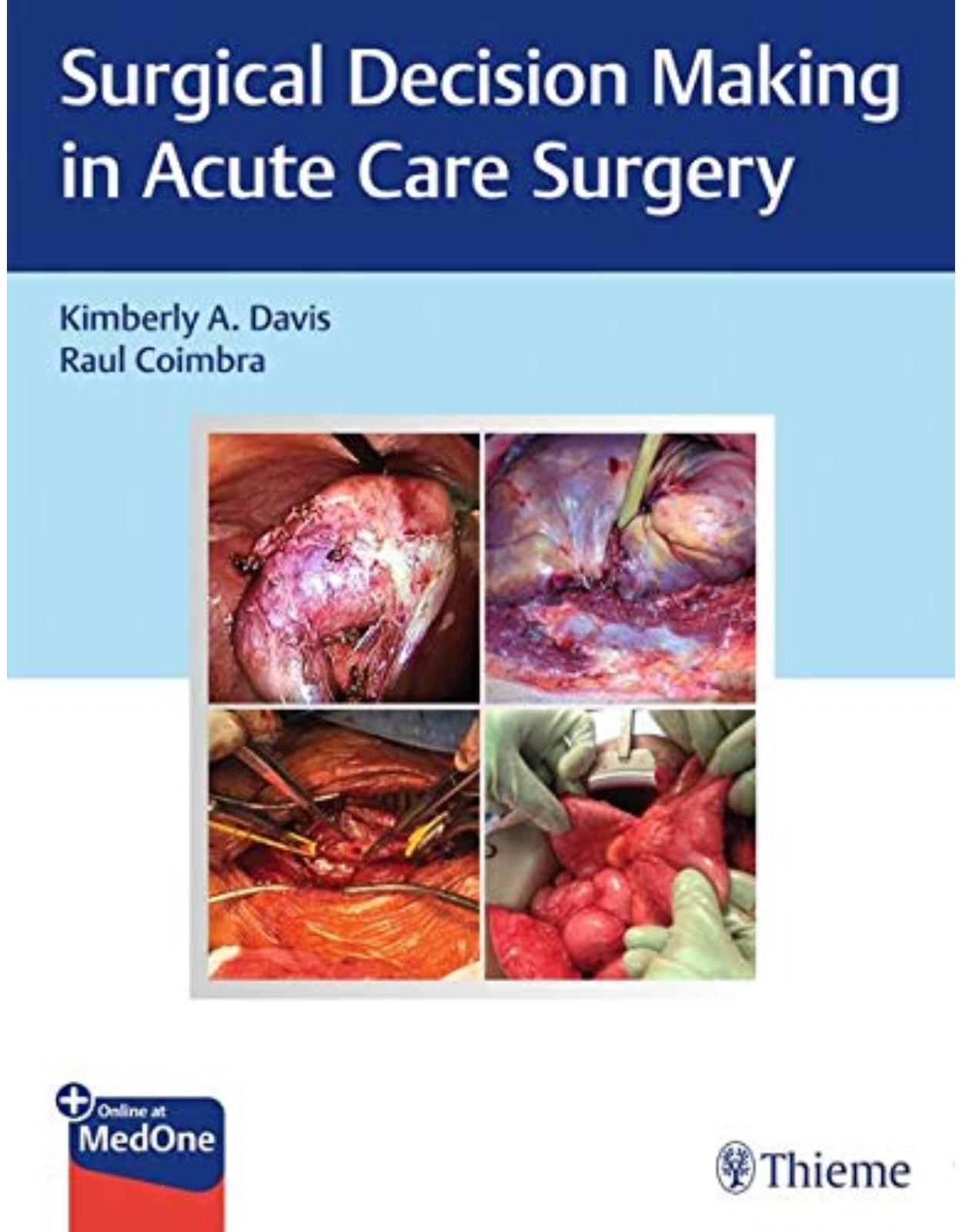
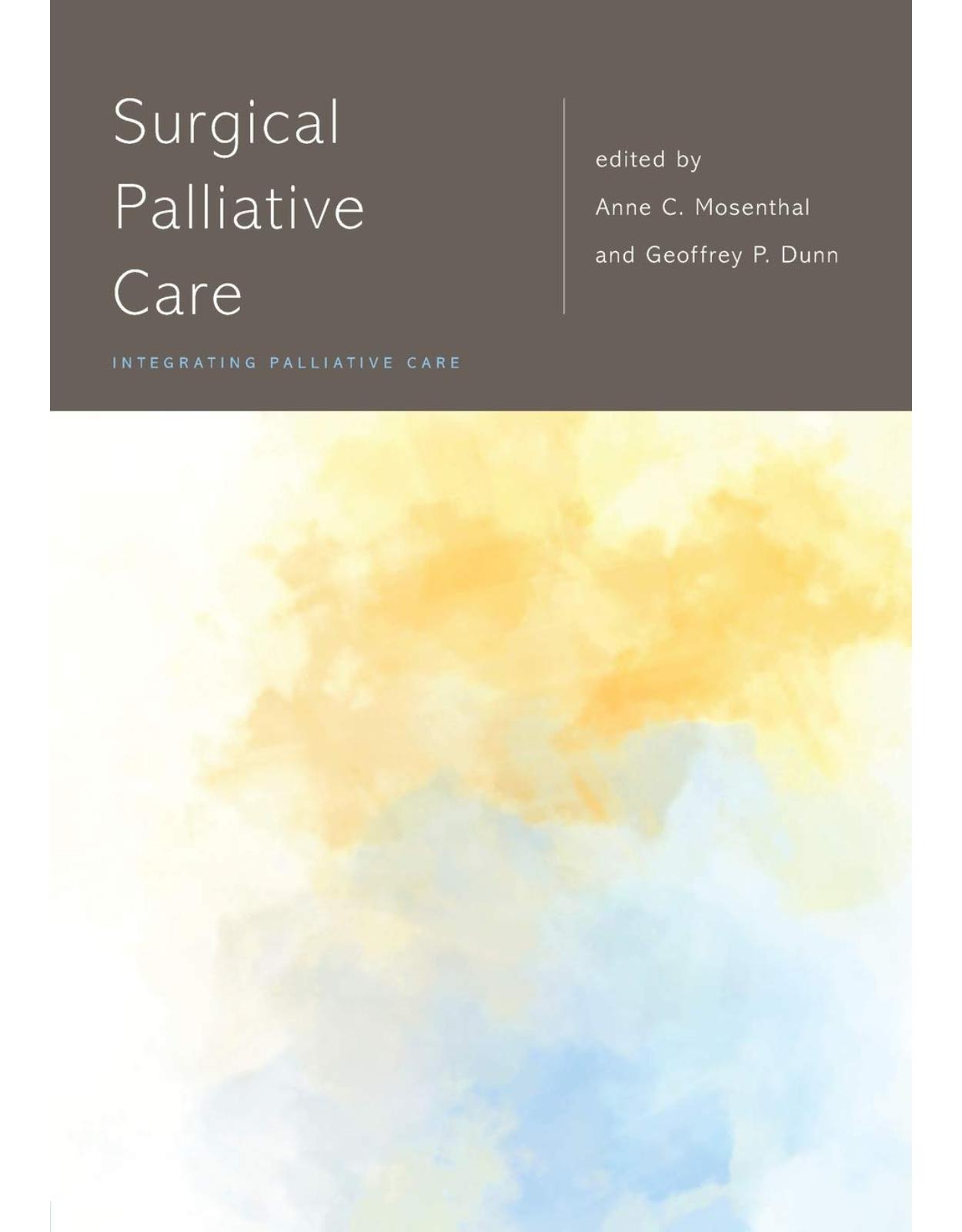

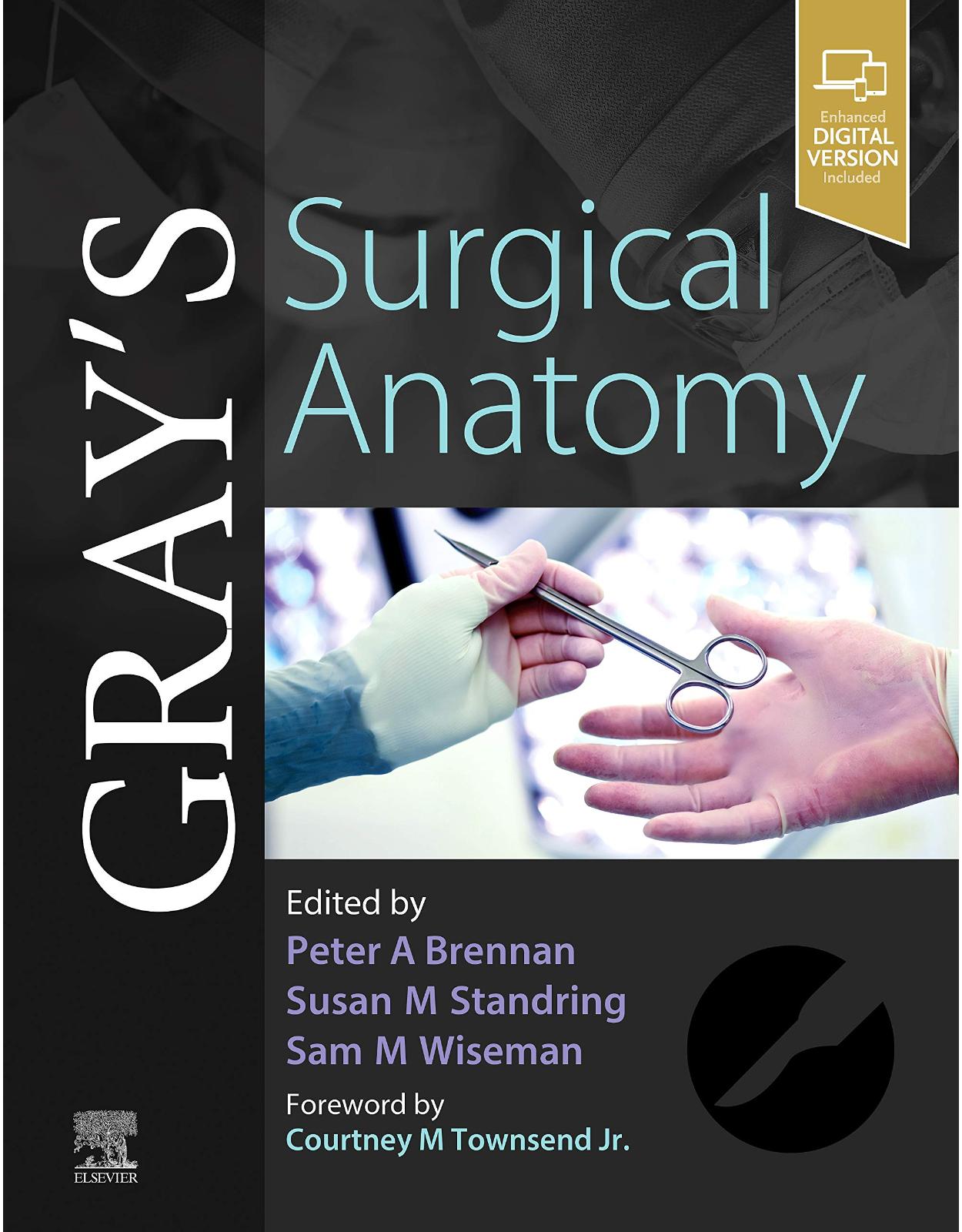
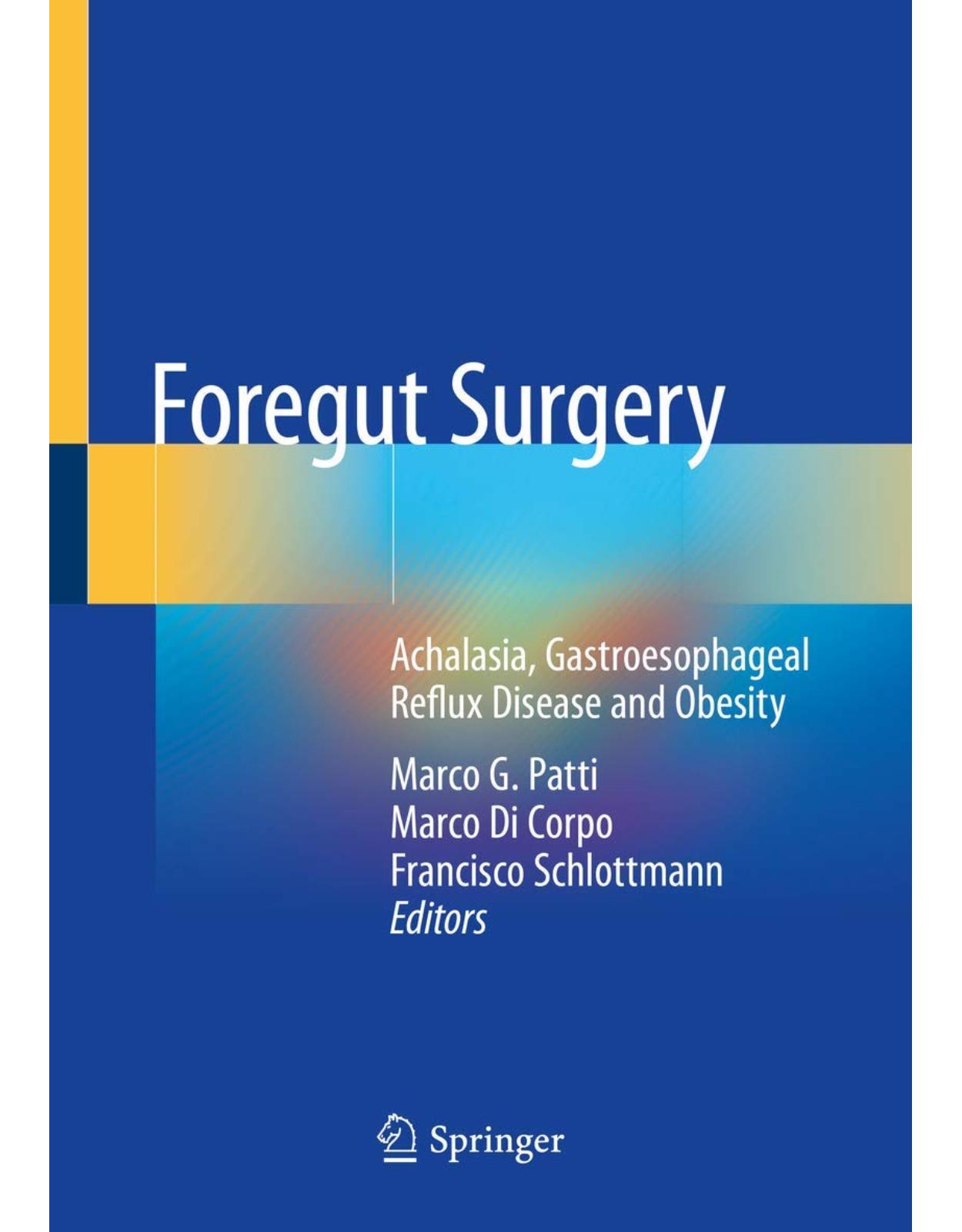
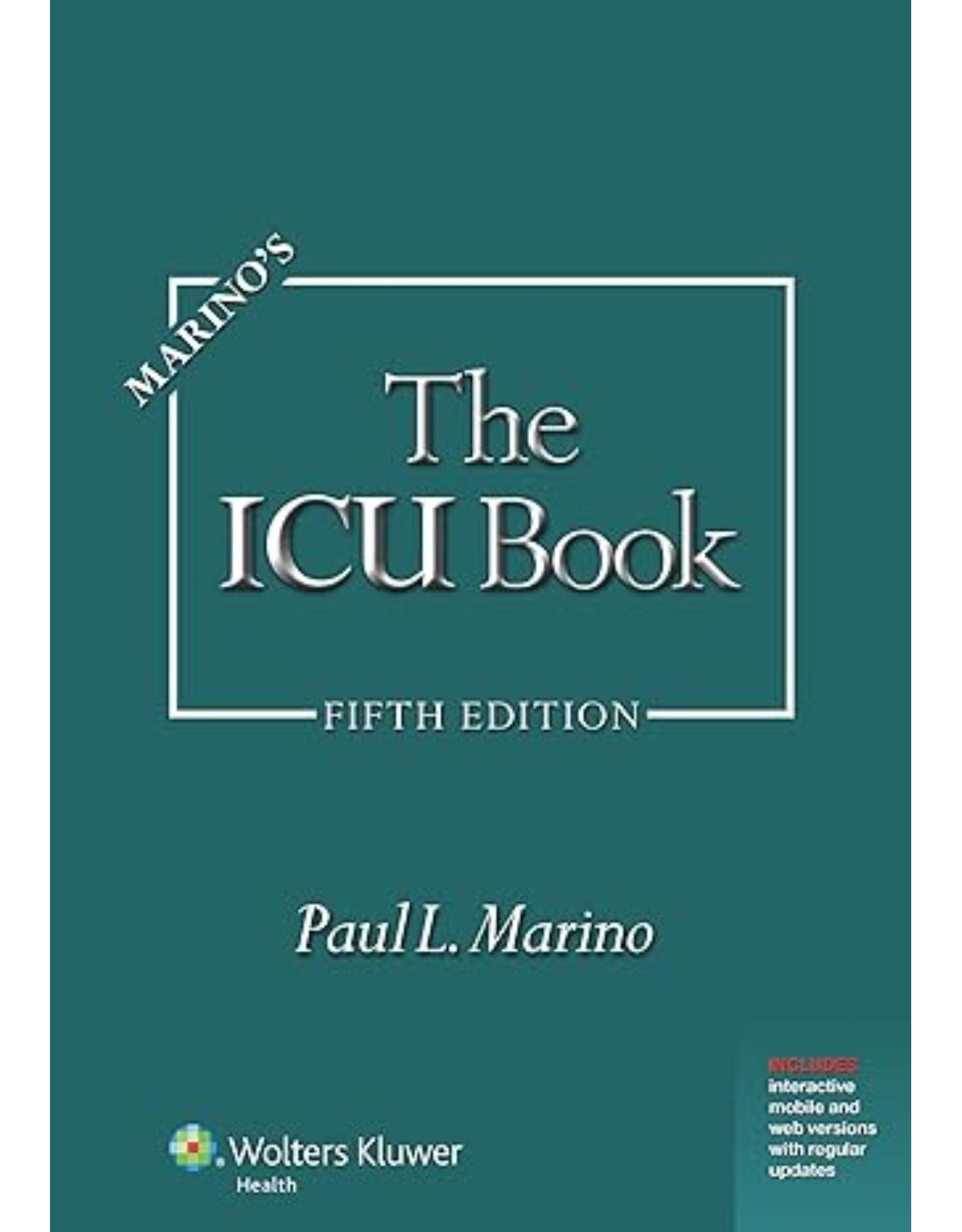
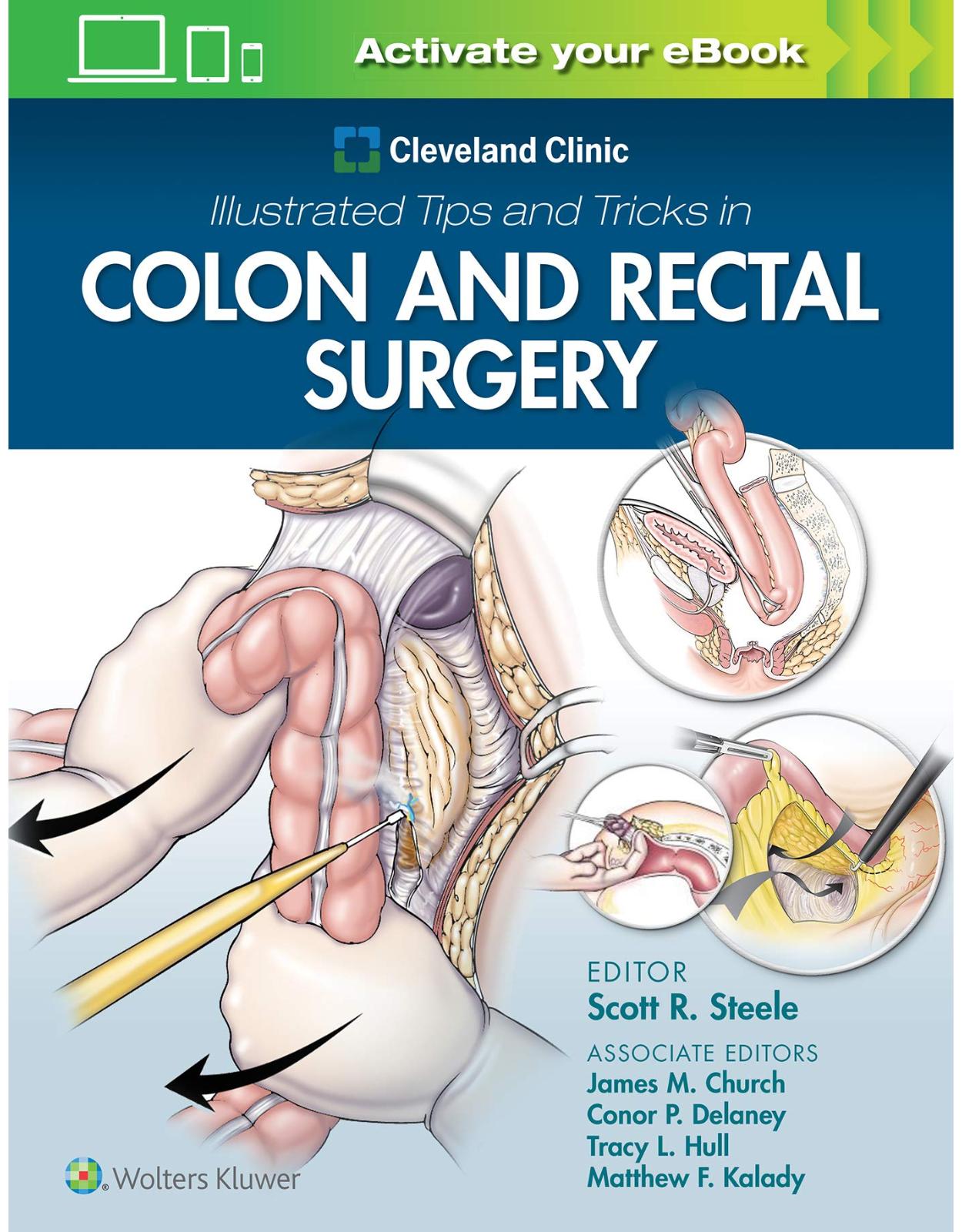
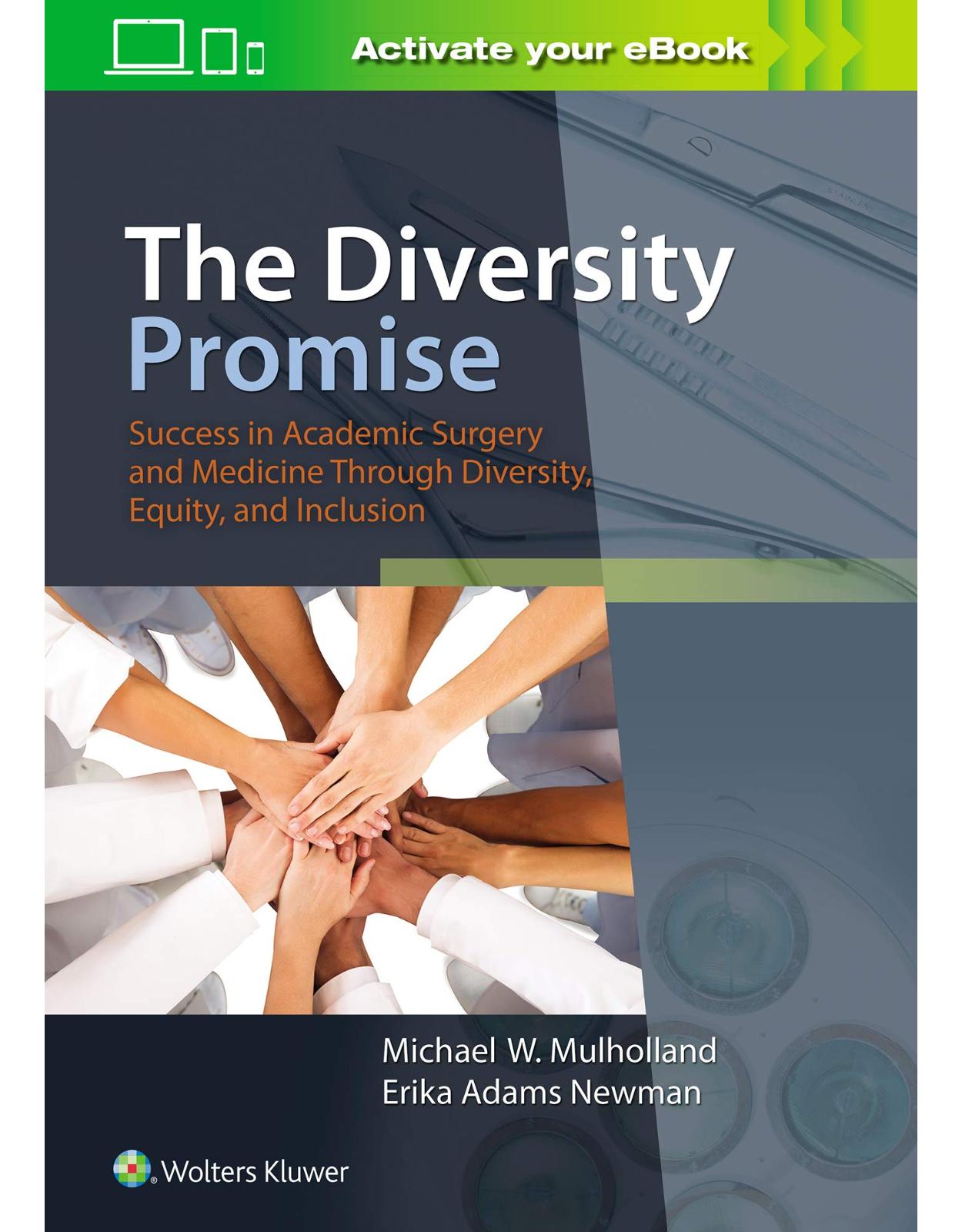
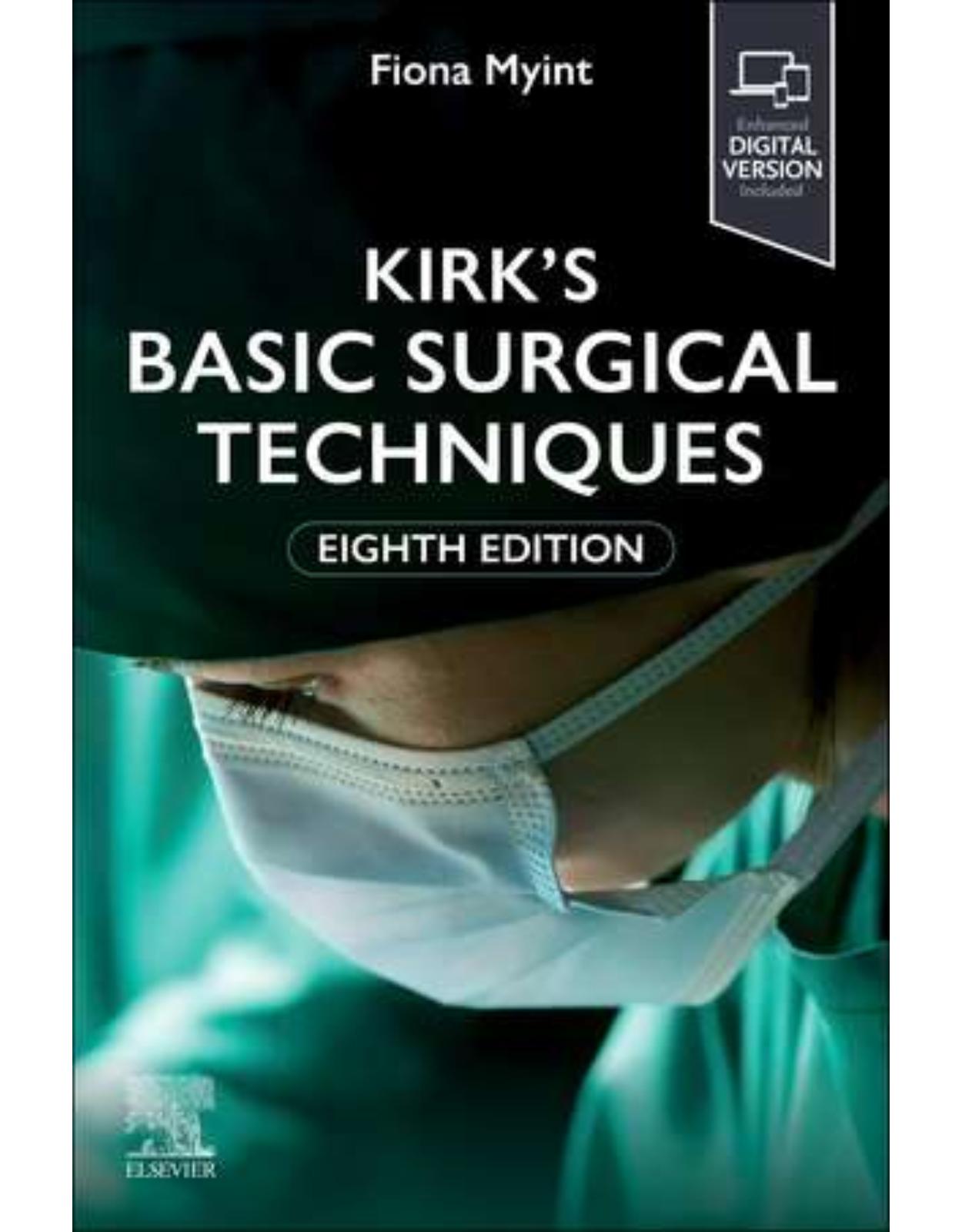
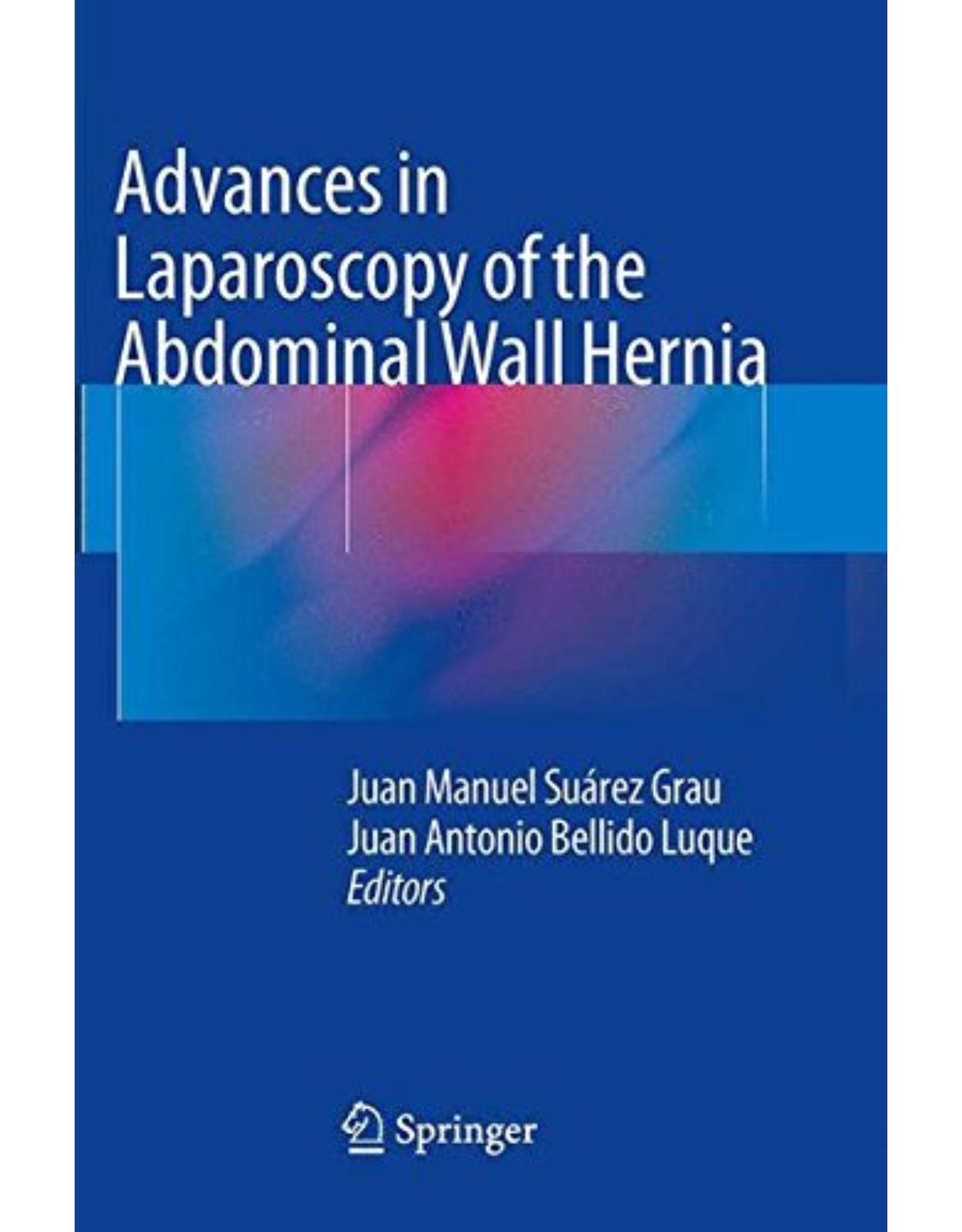


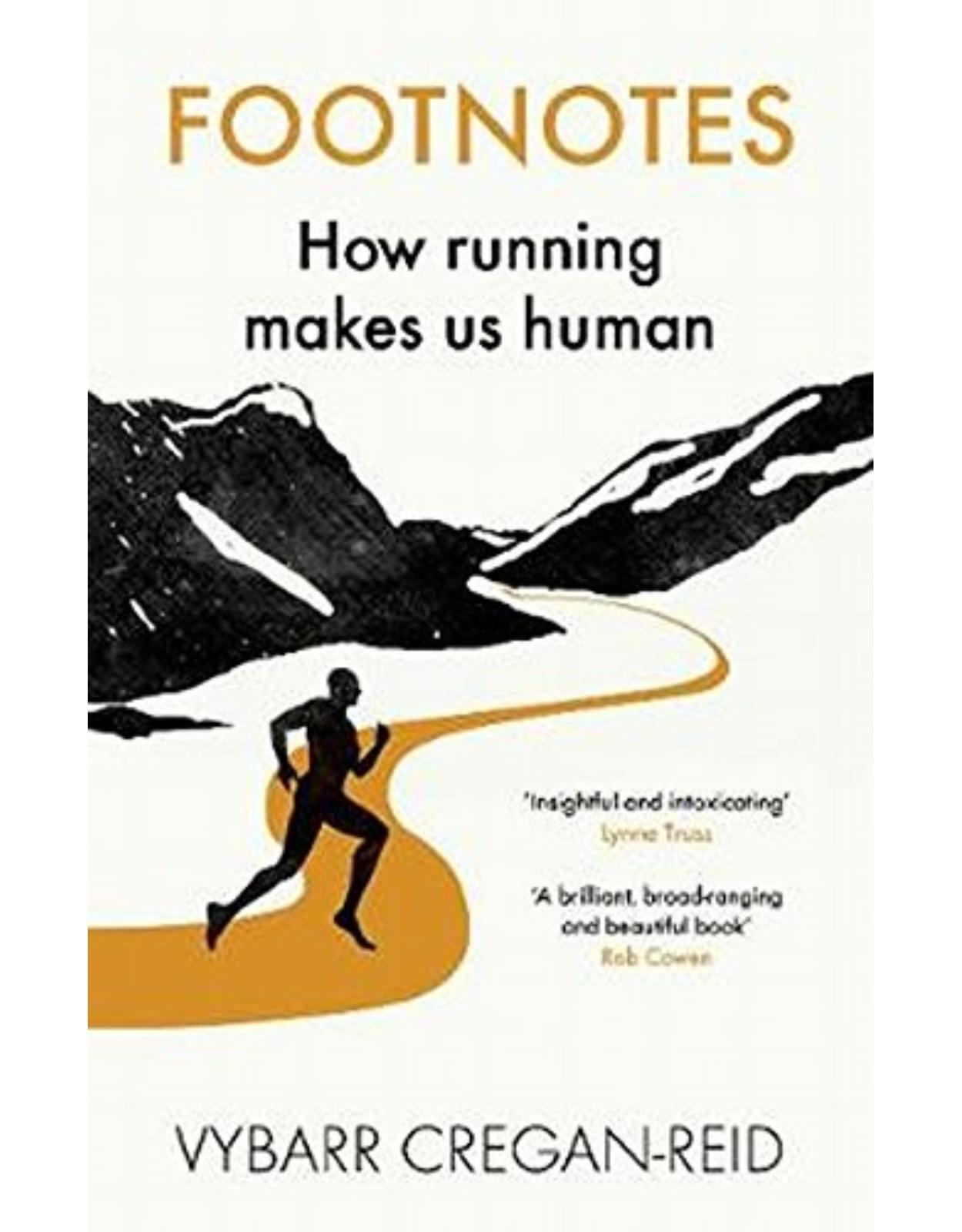
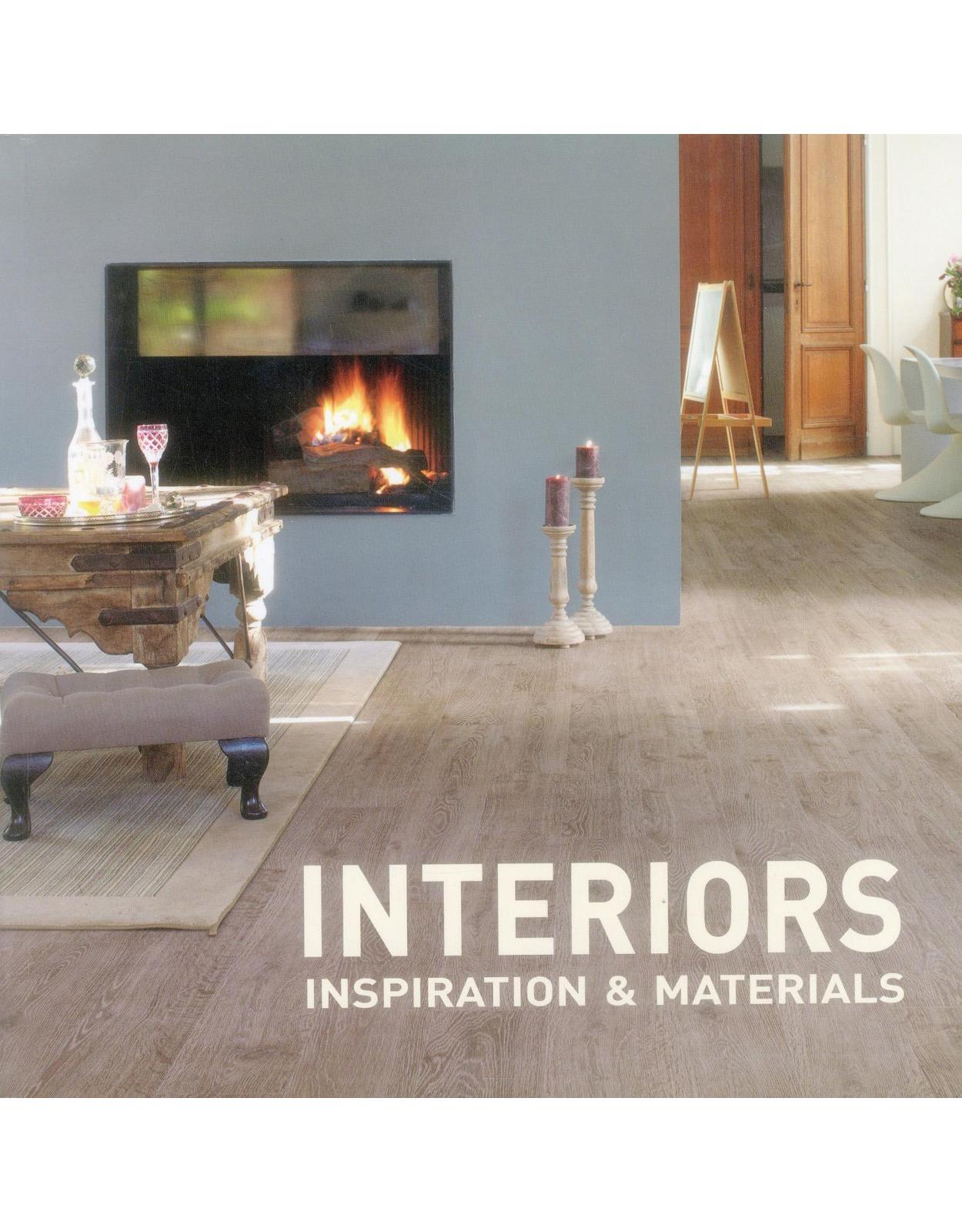
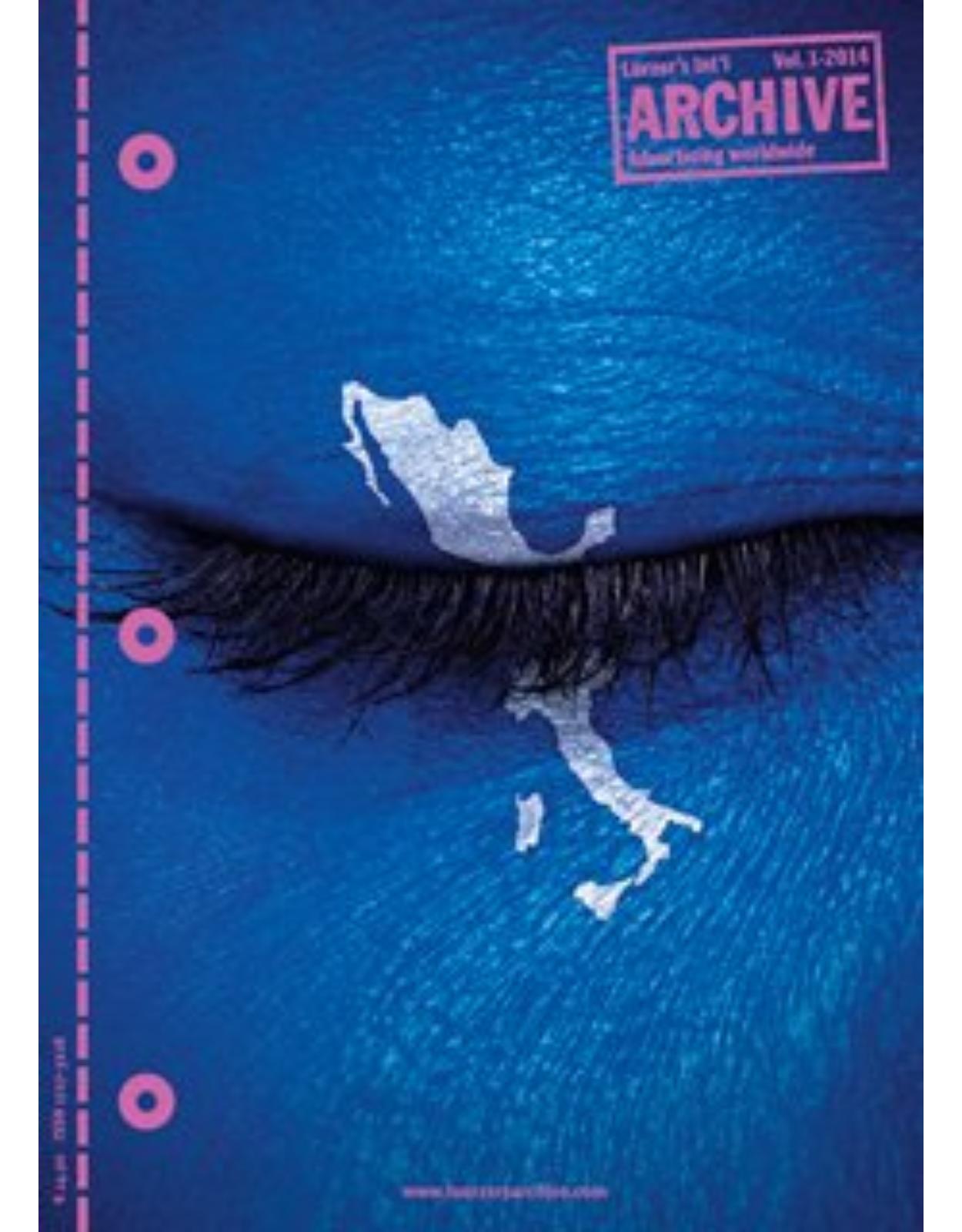
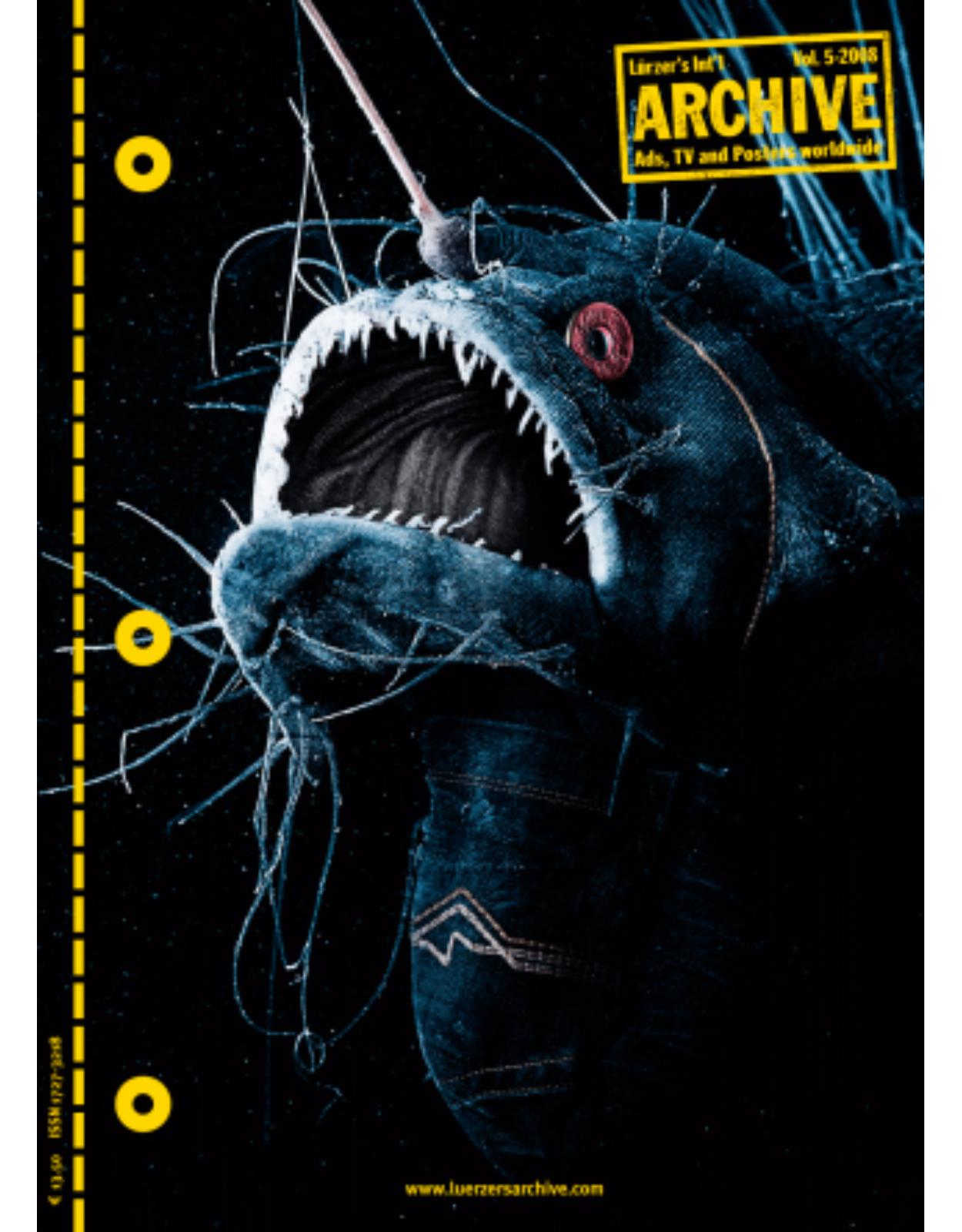

Clientii ebookshop.ro nu au adaugat inca opinii pentru acest produs. Fii primul care adauga o parere, folosind formularul de mai jos.